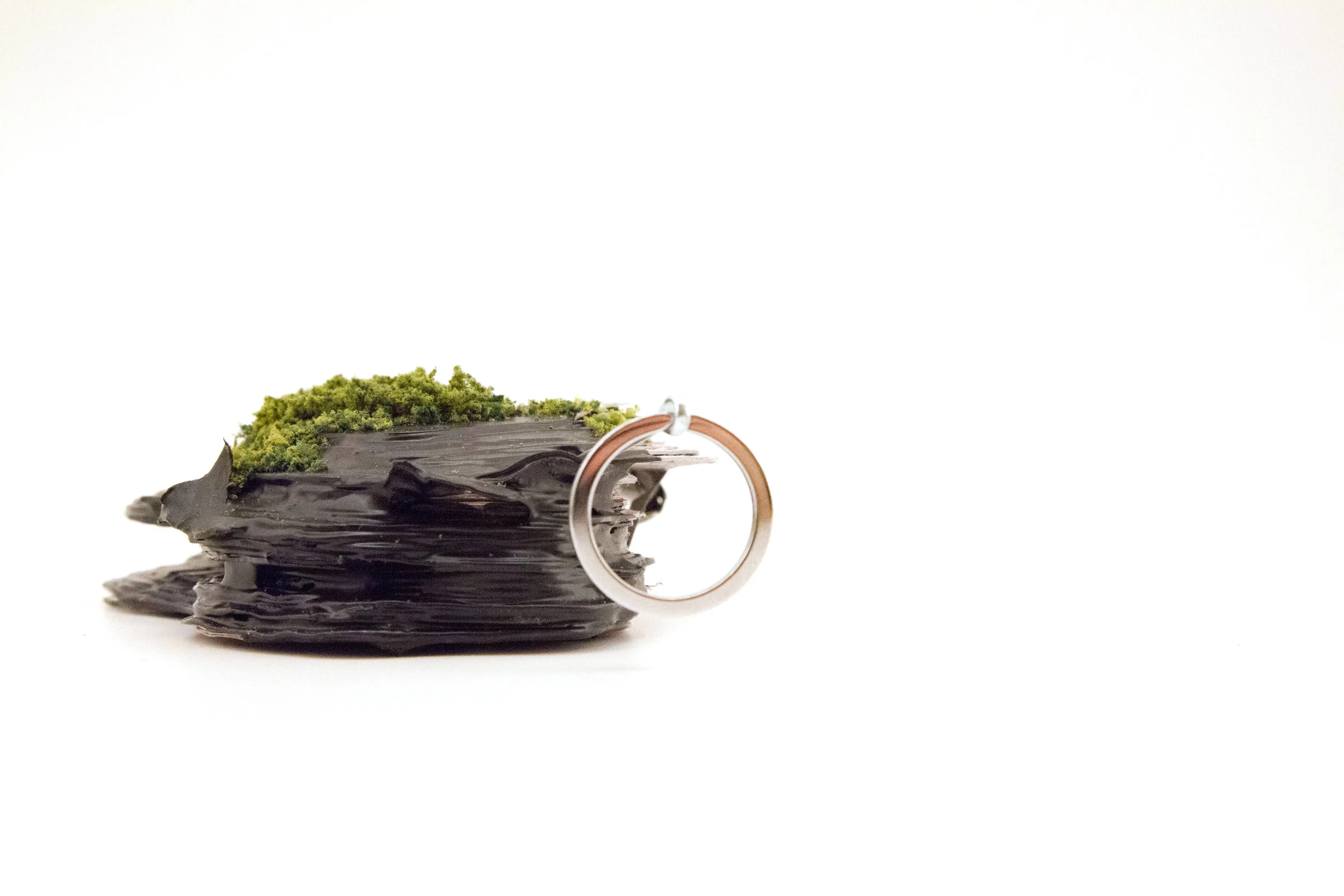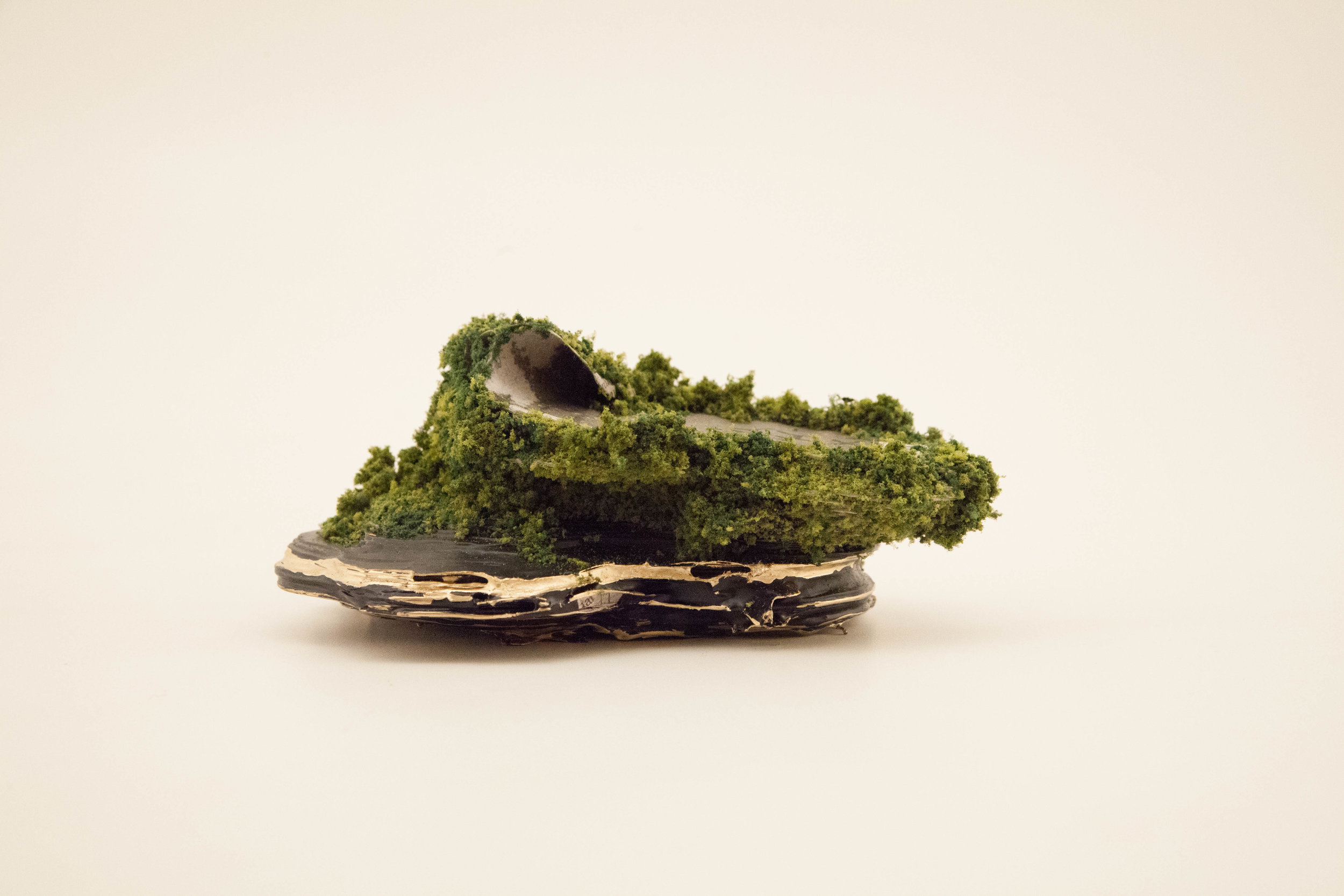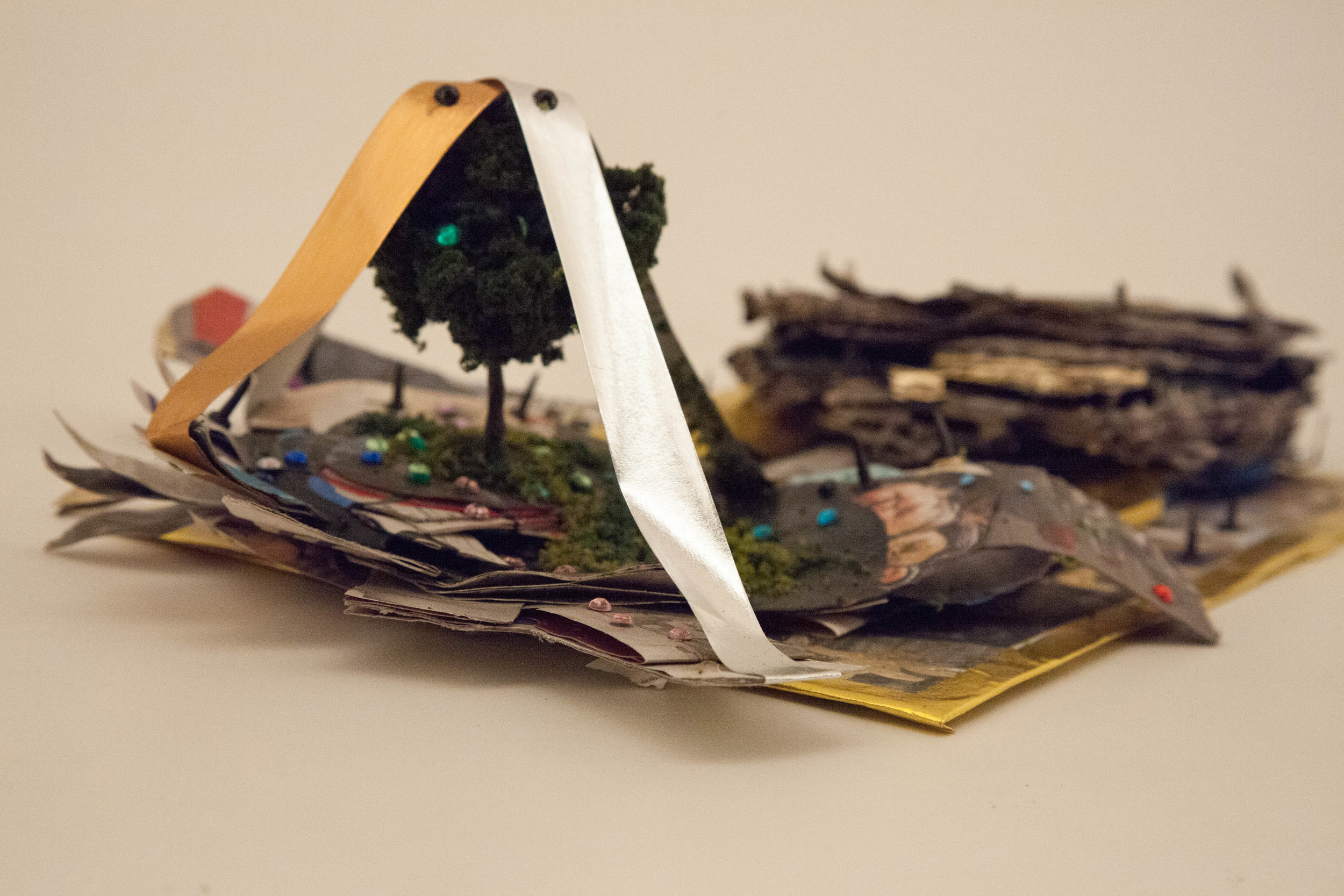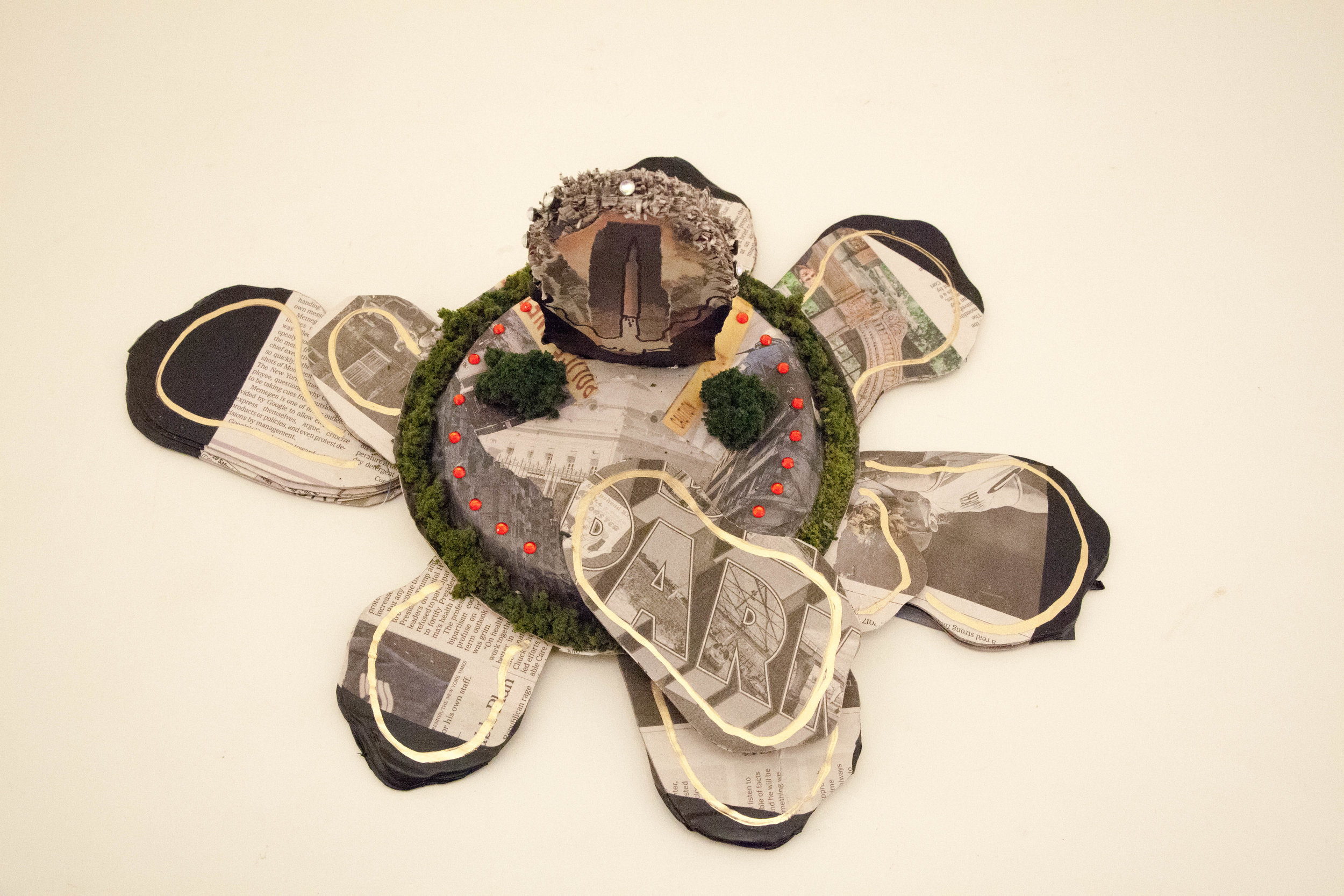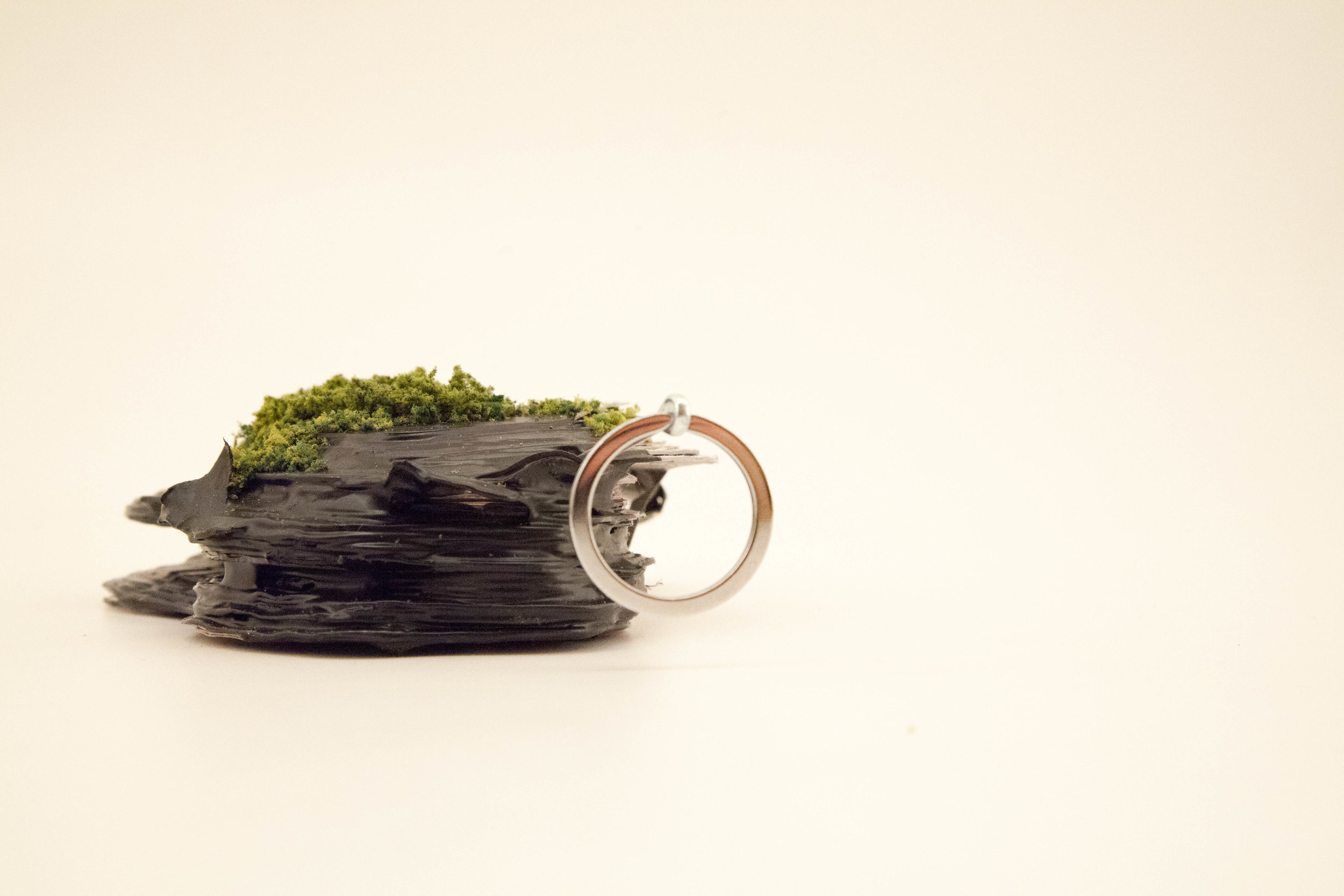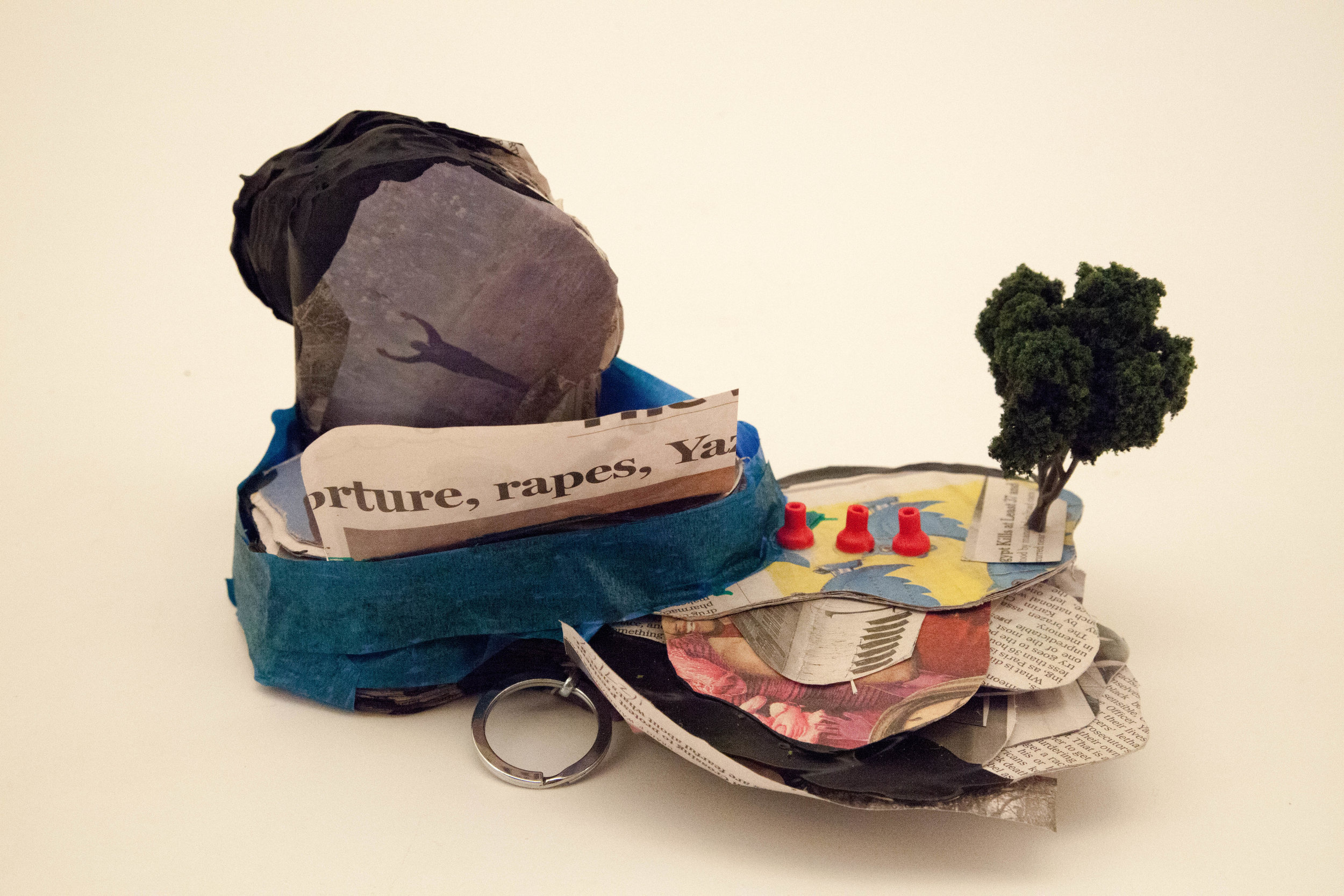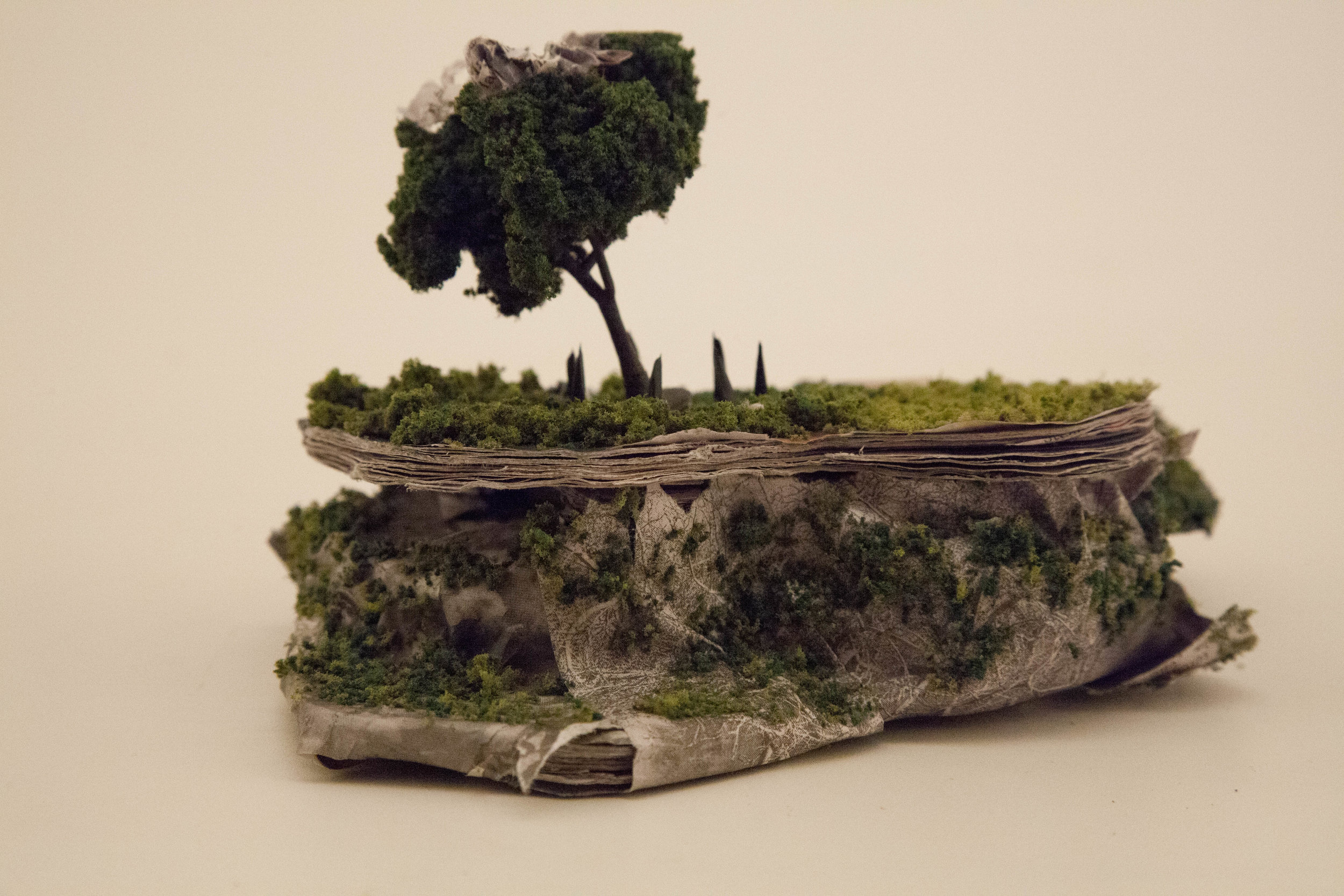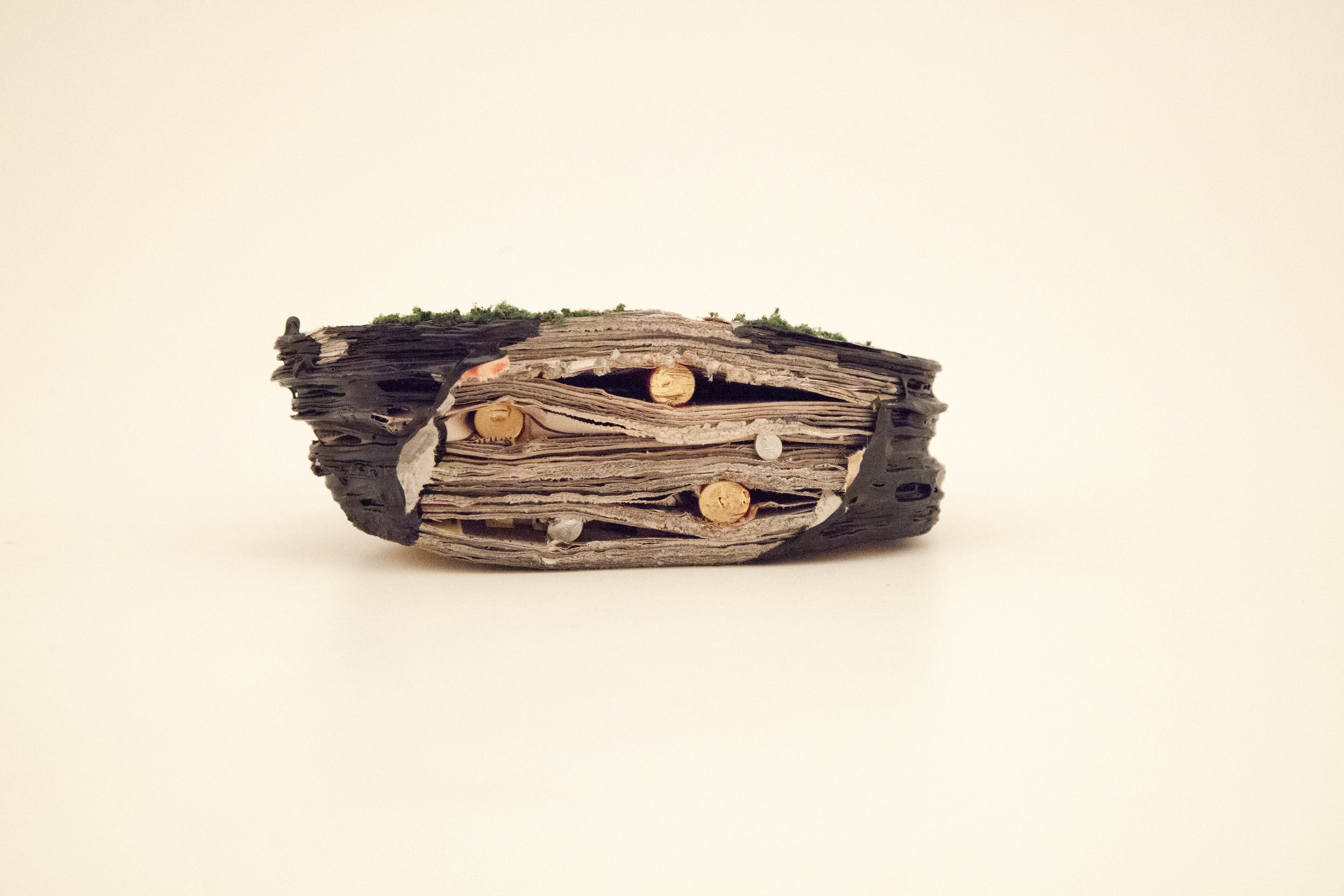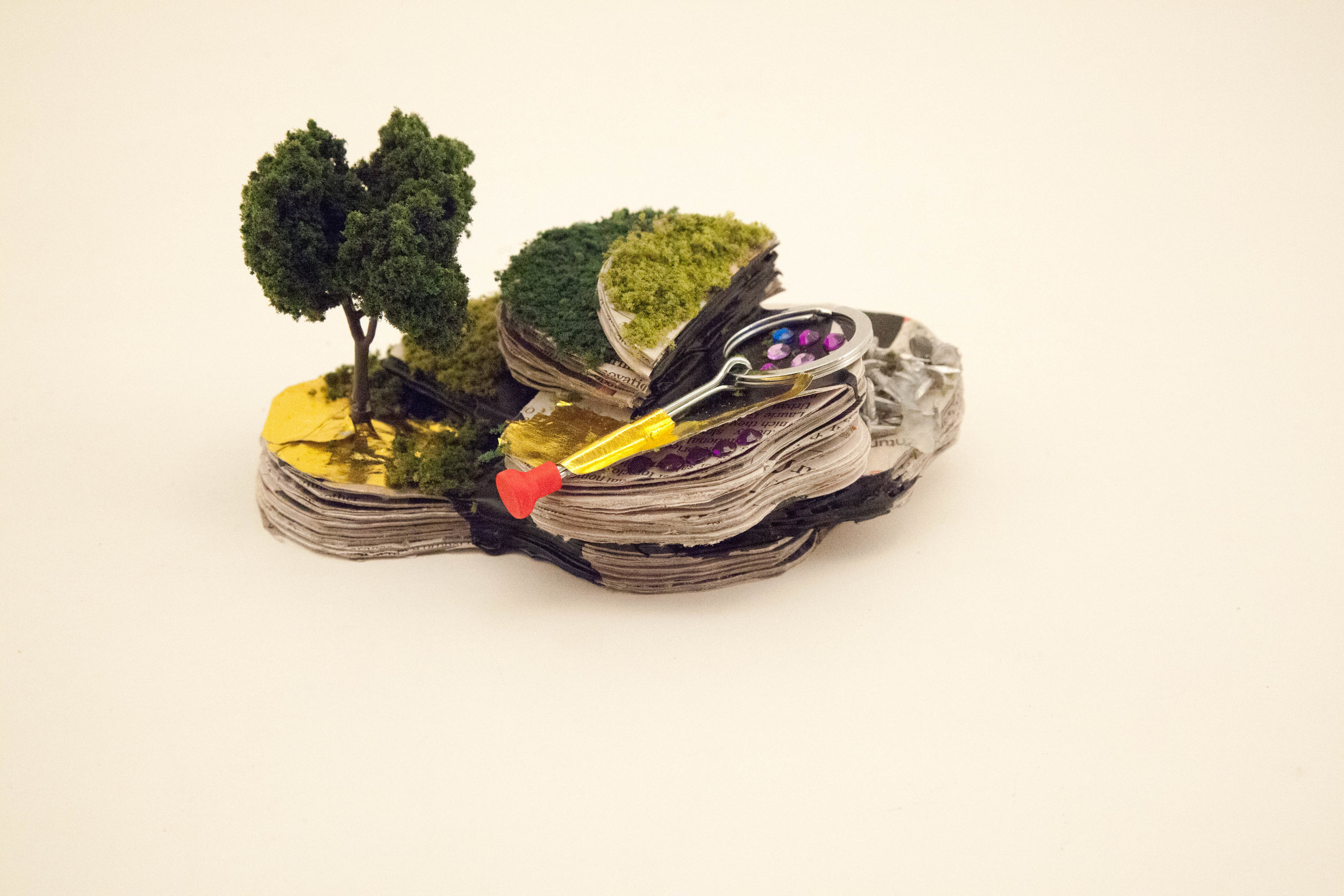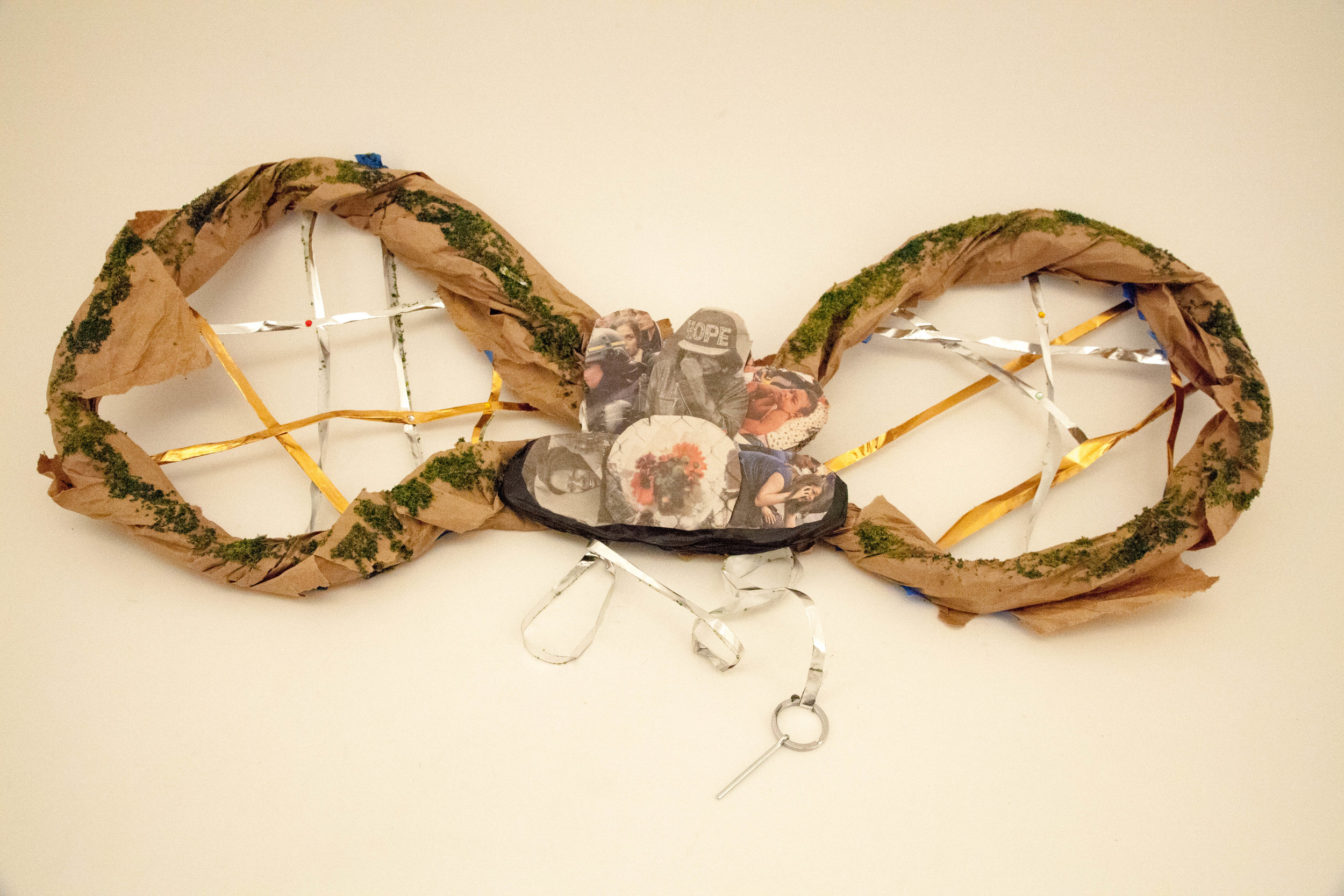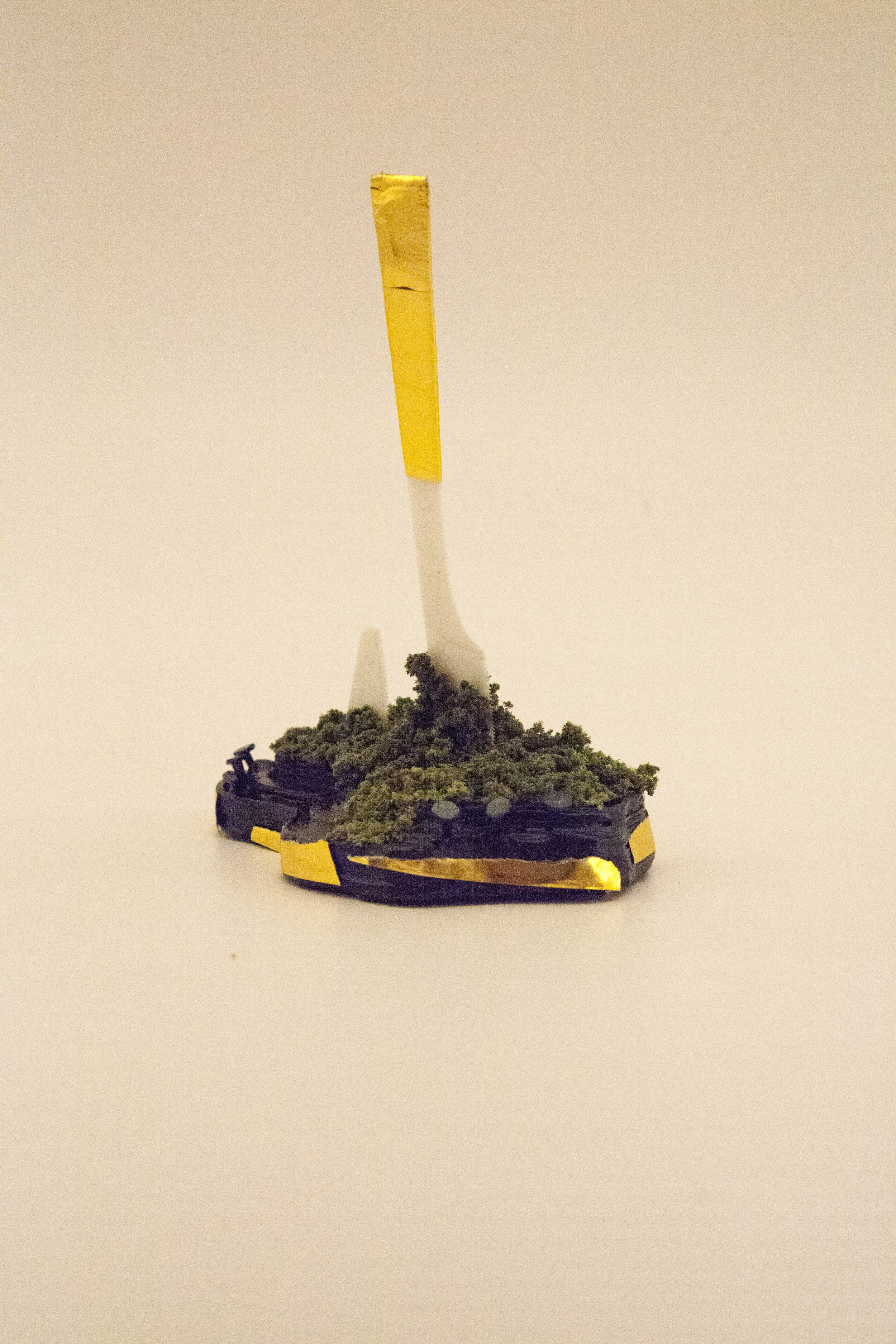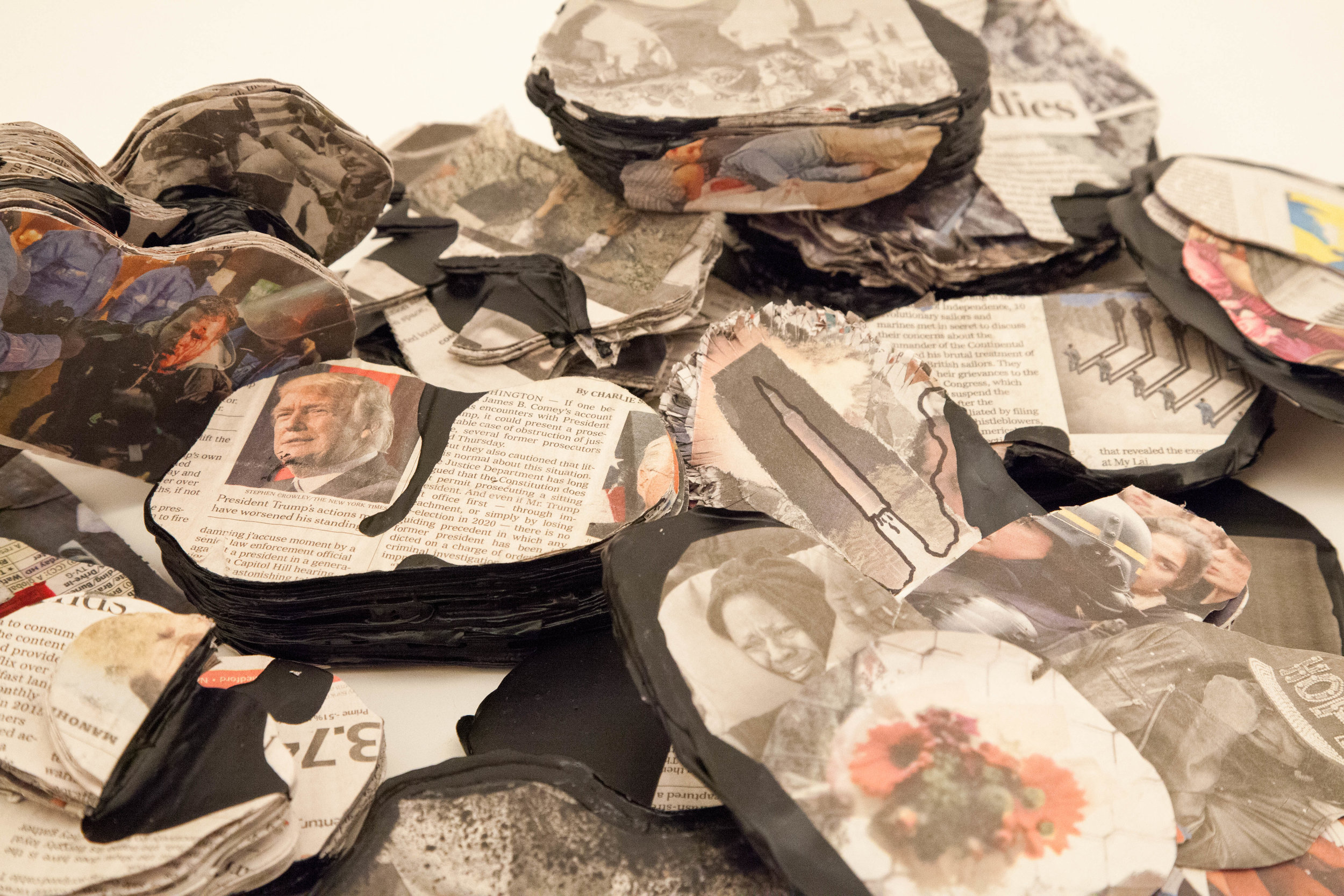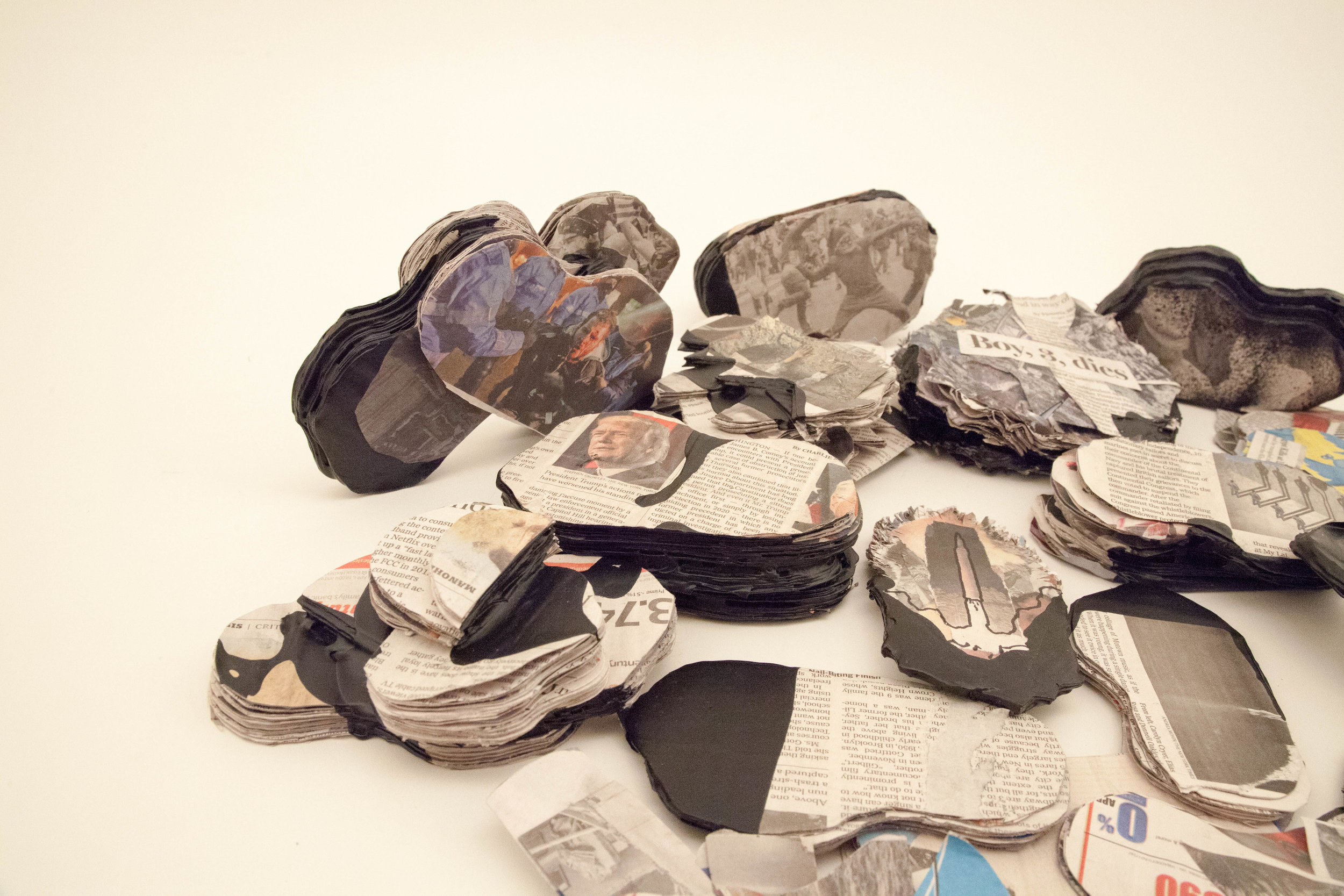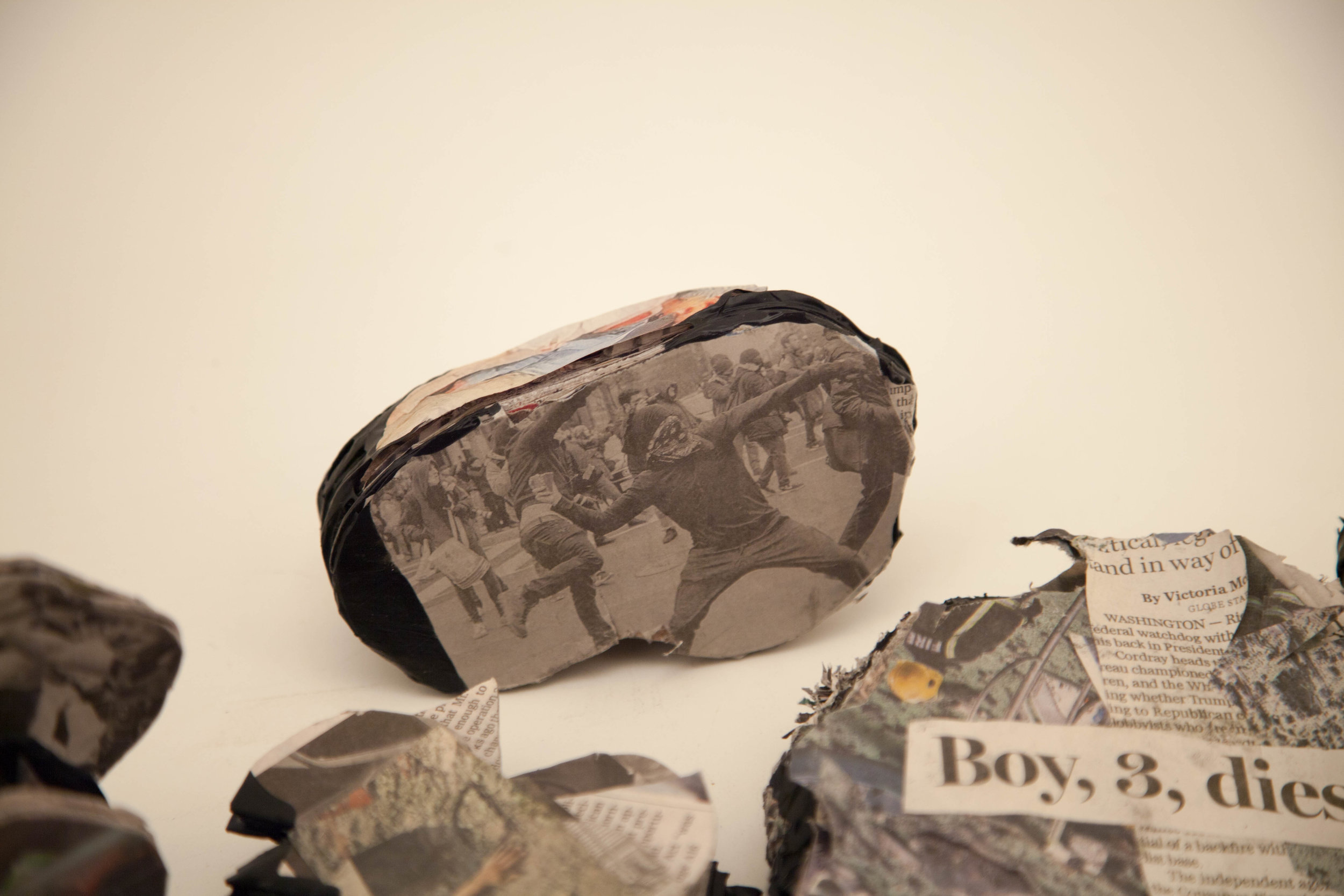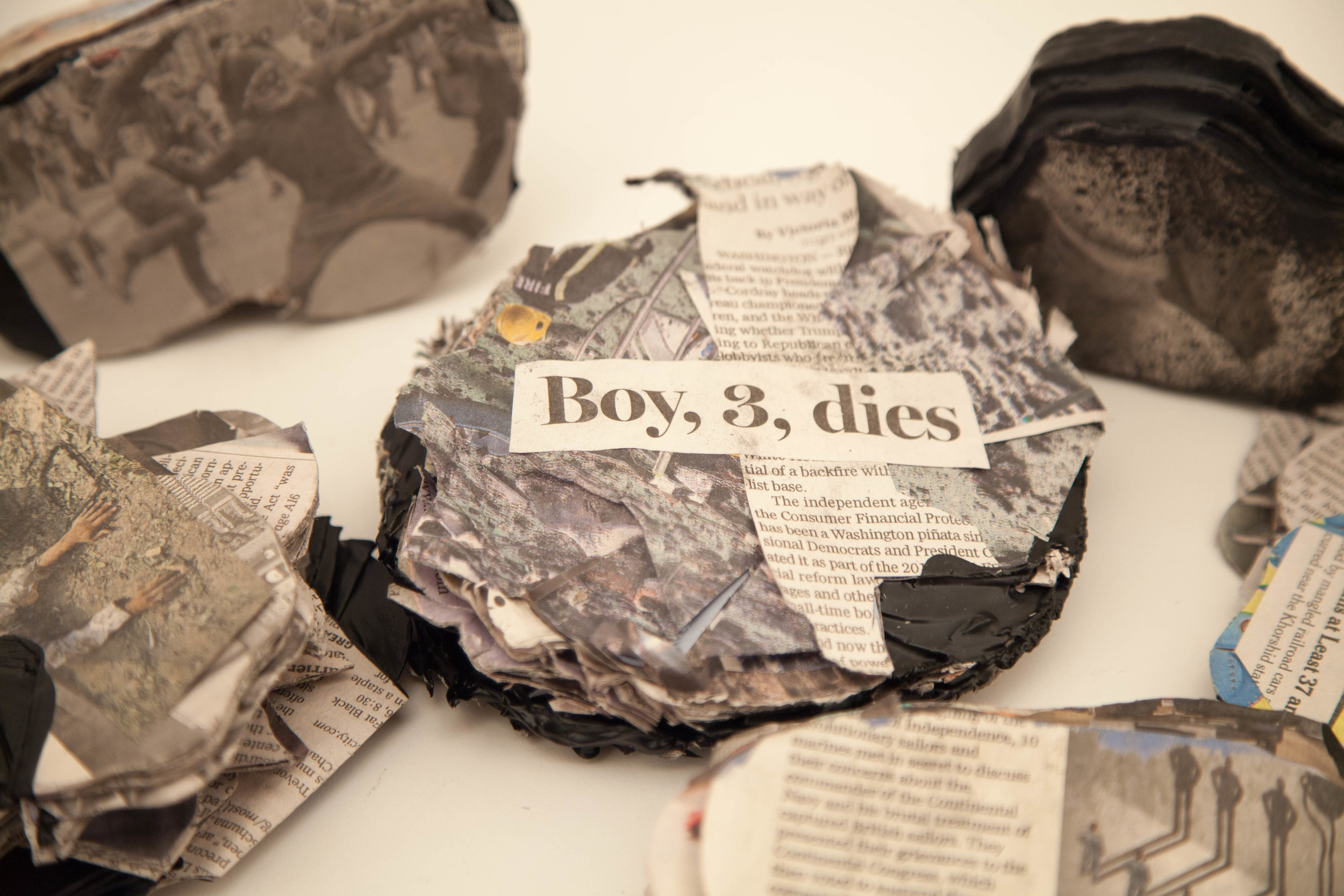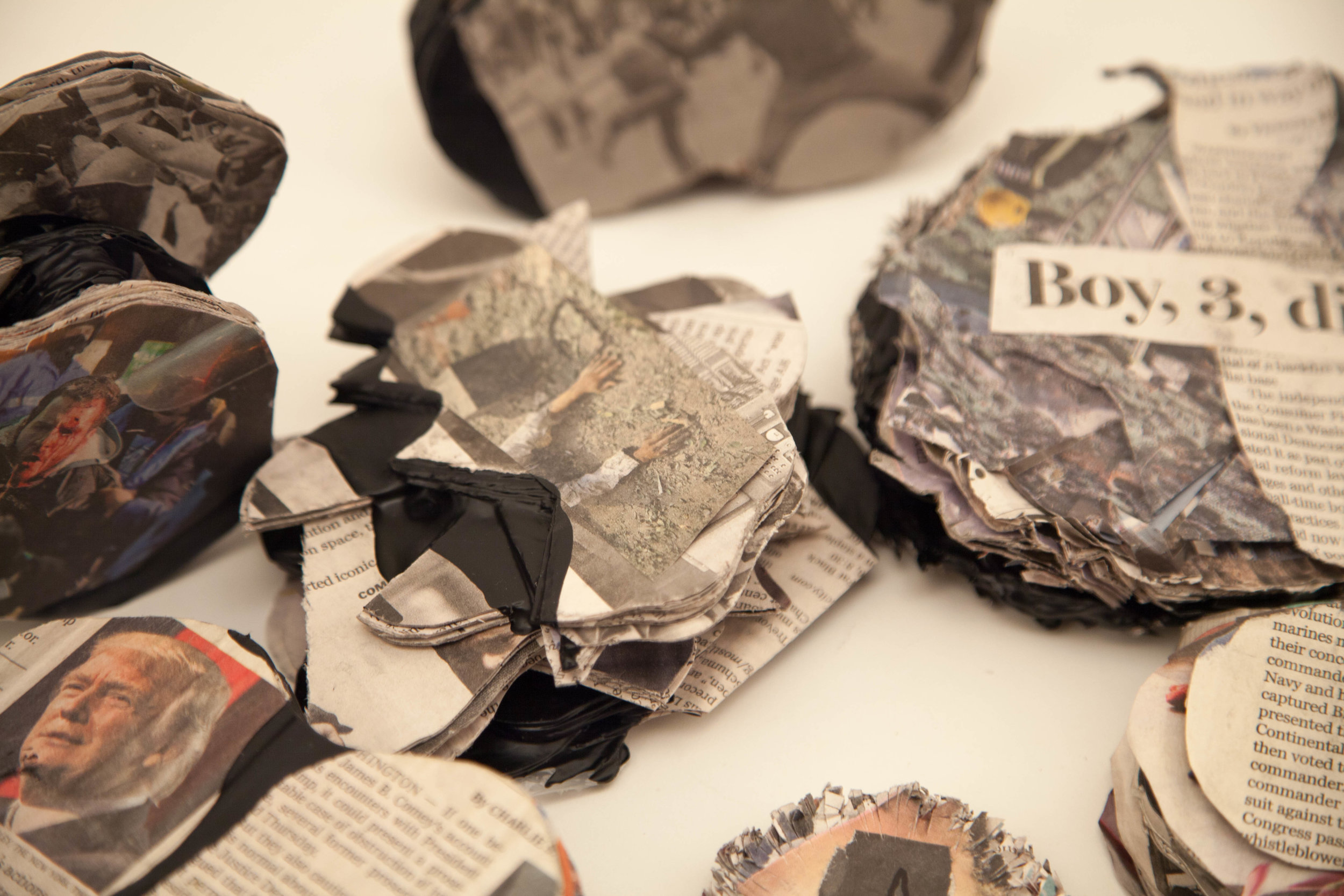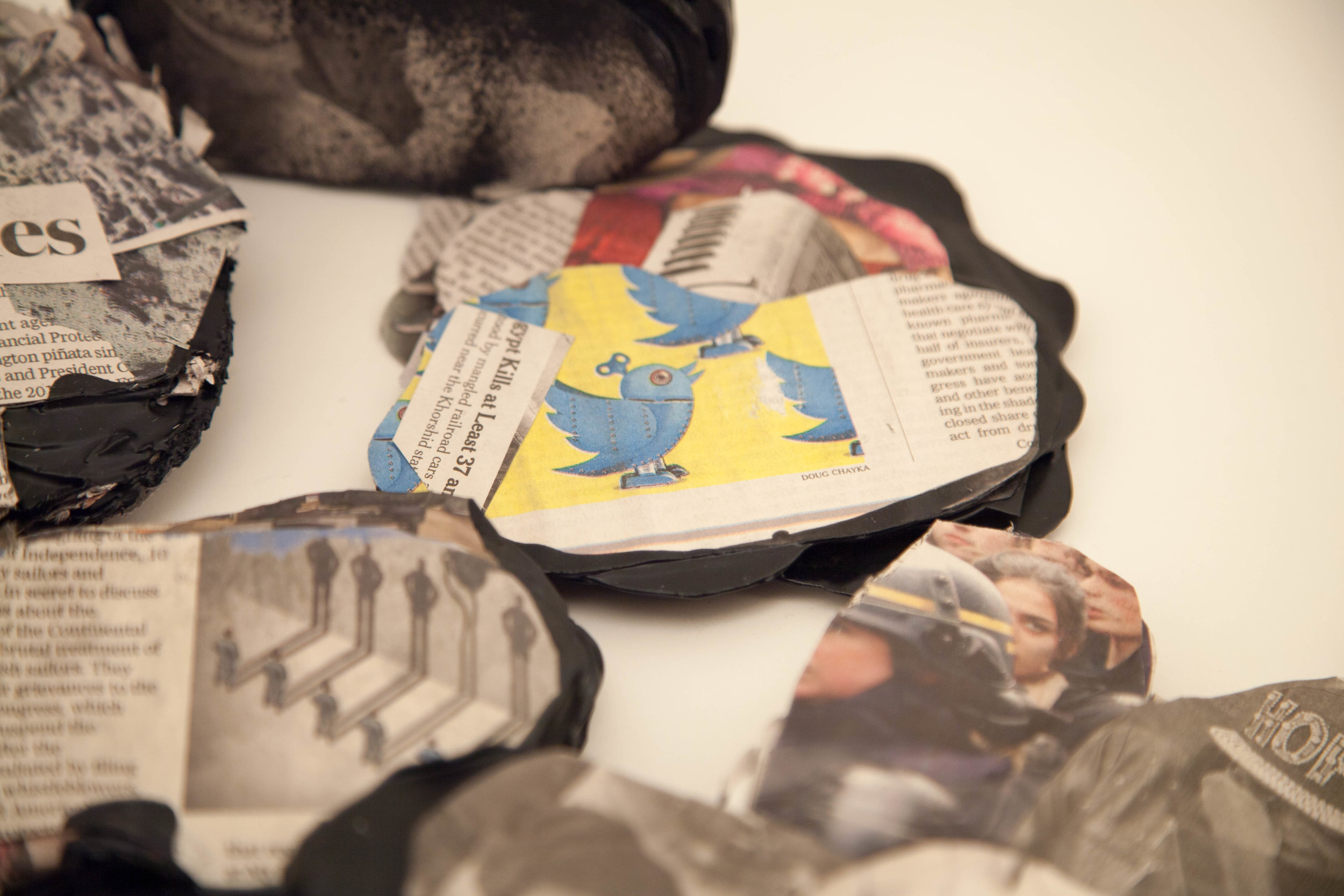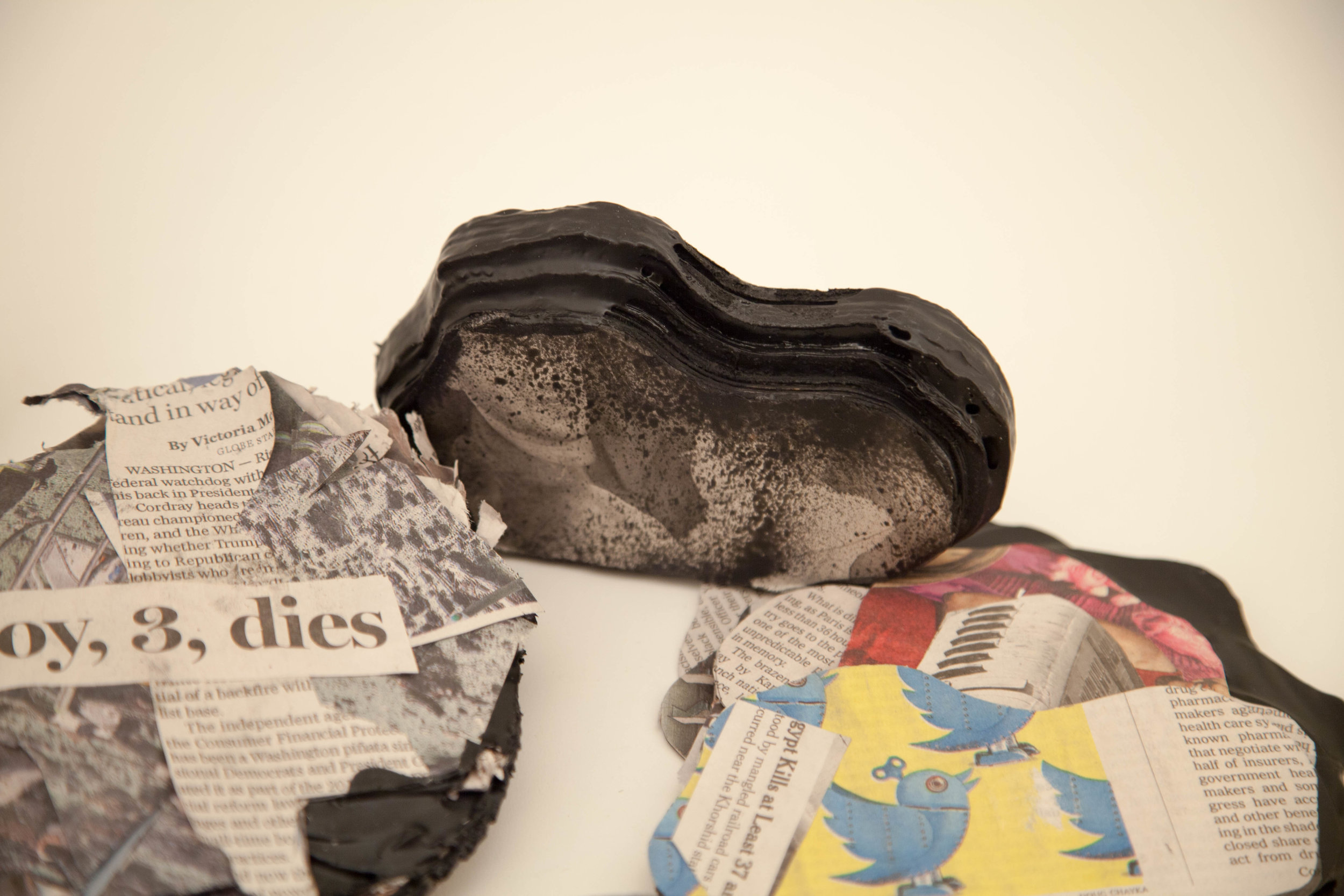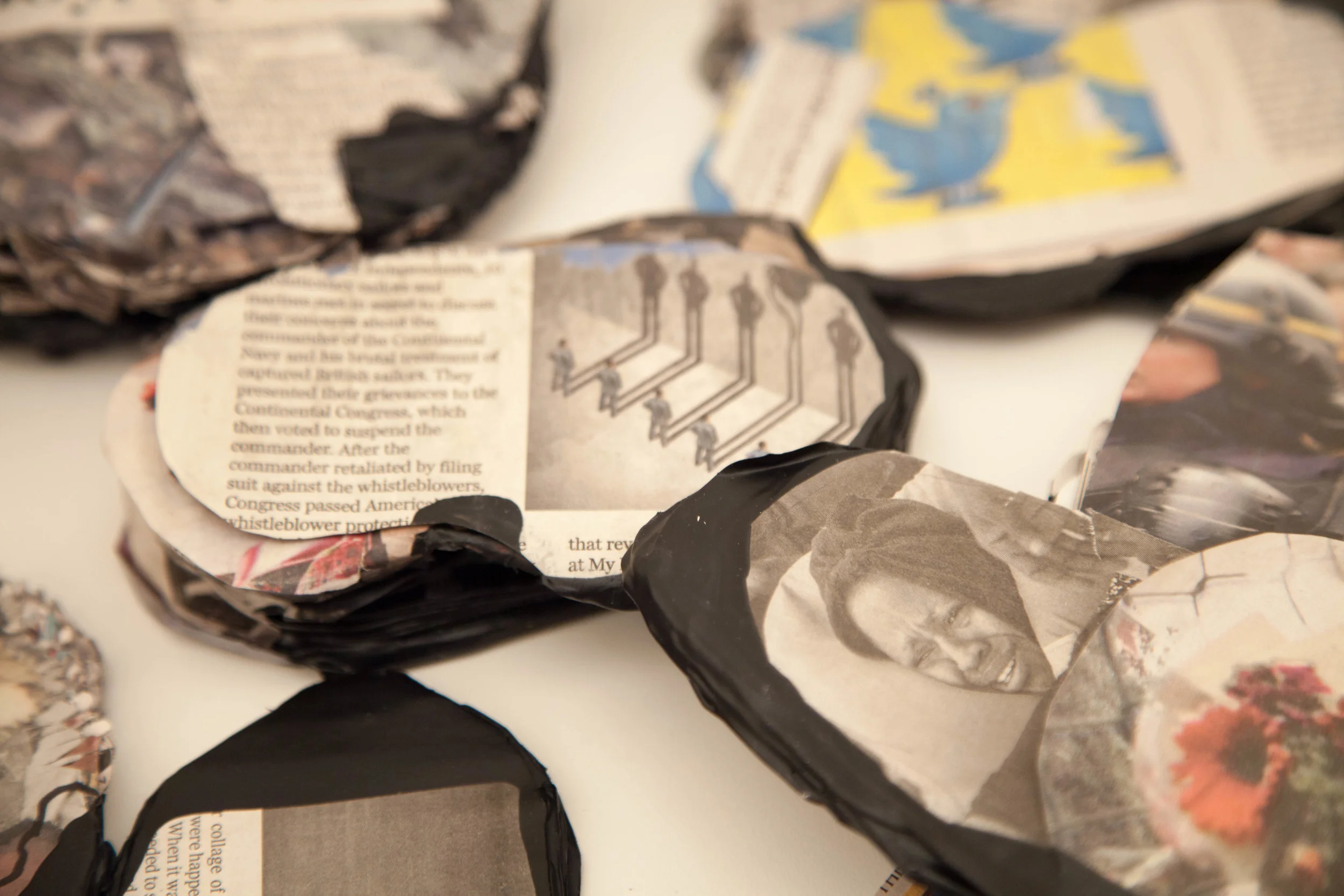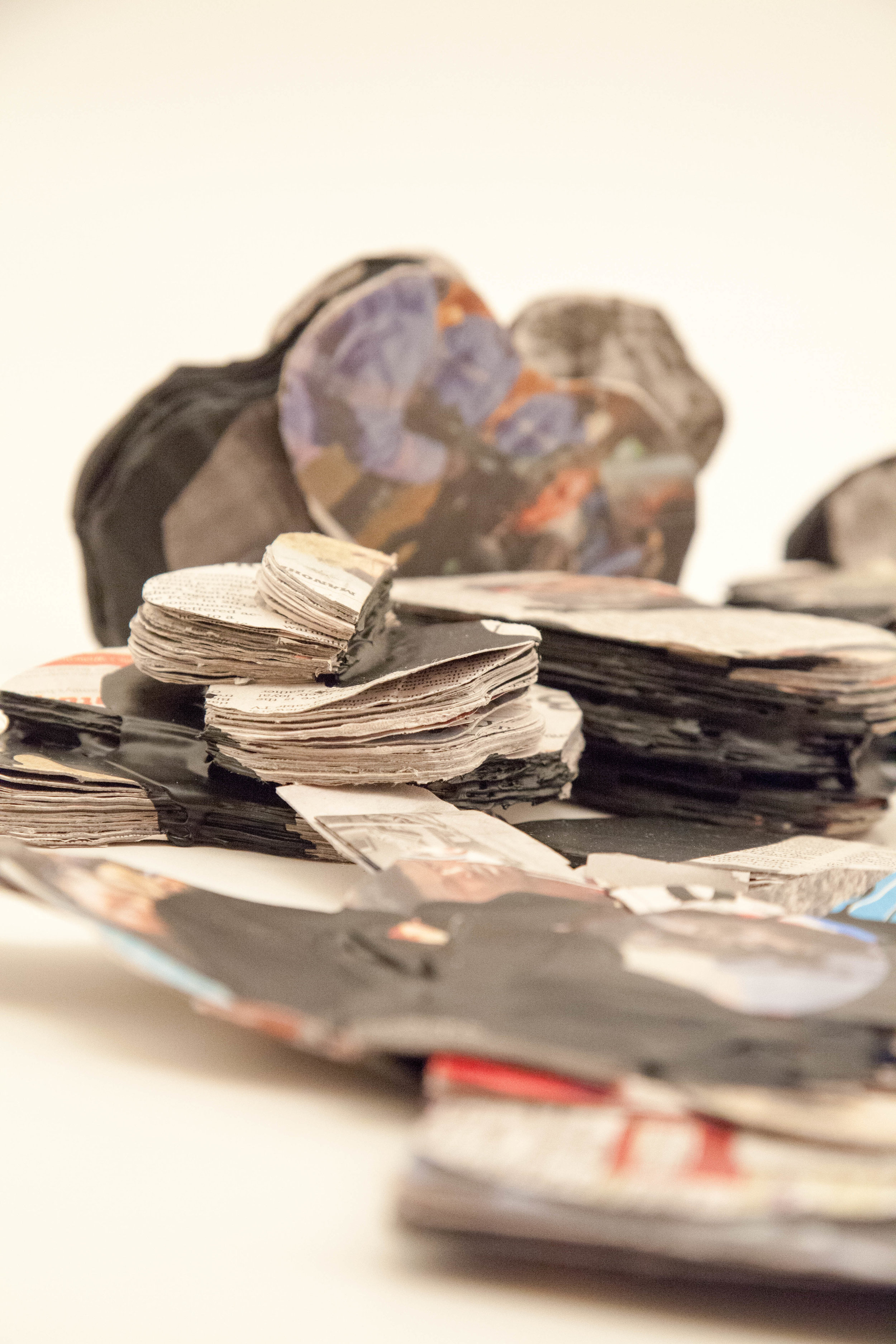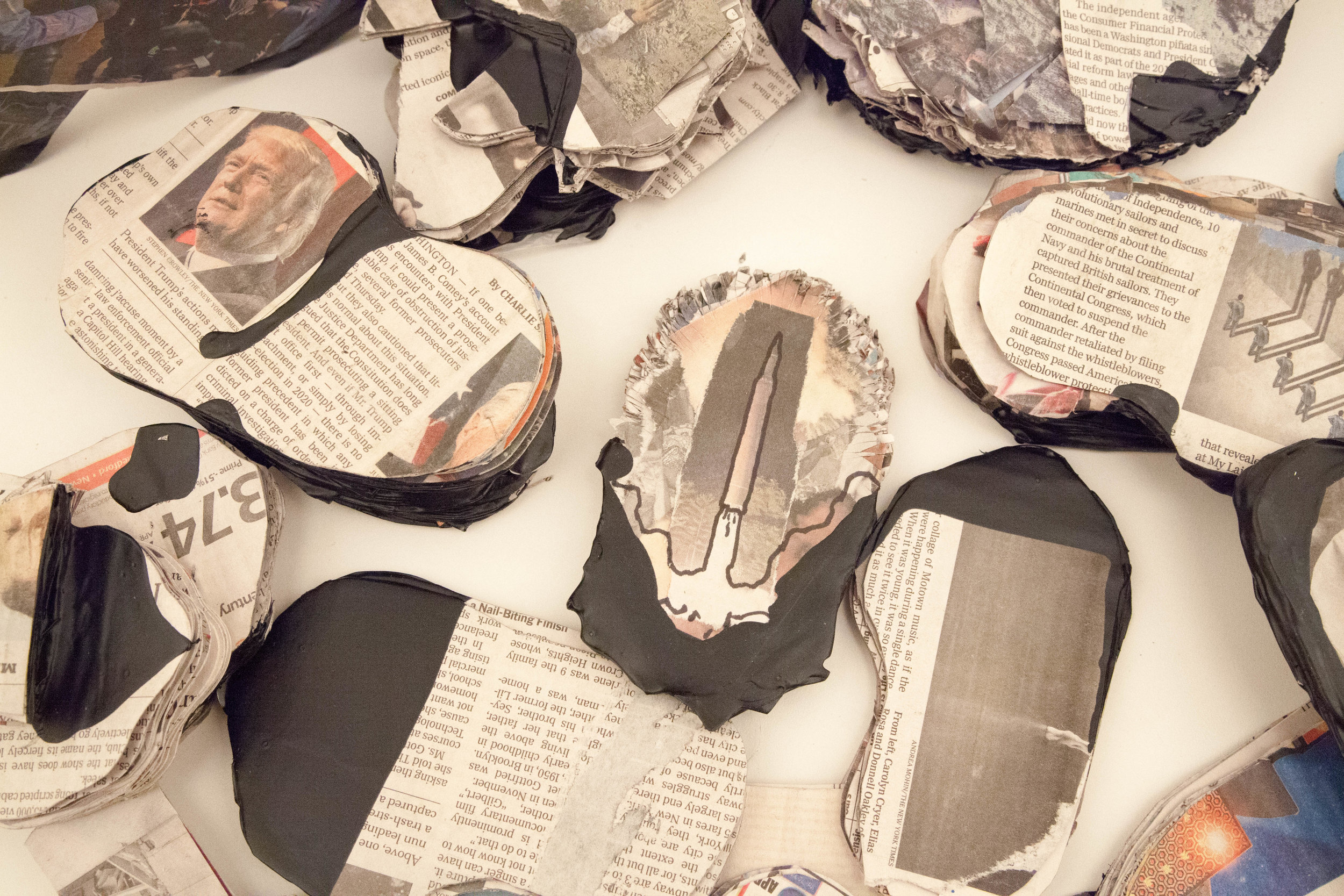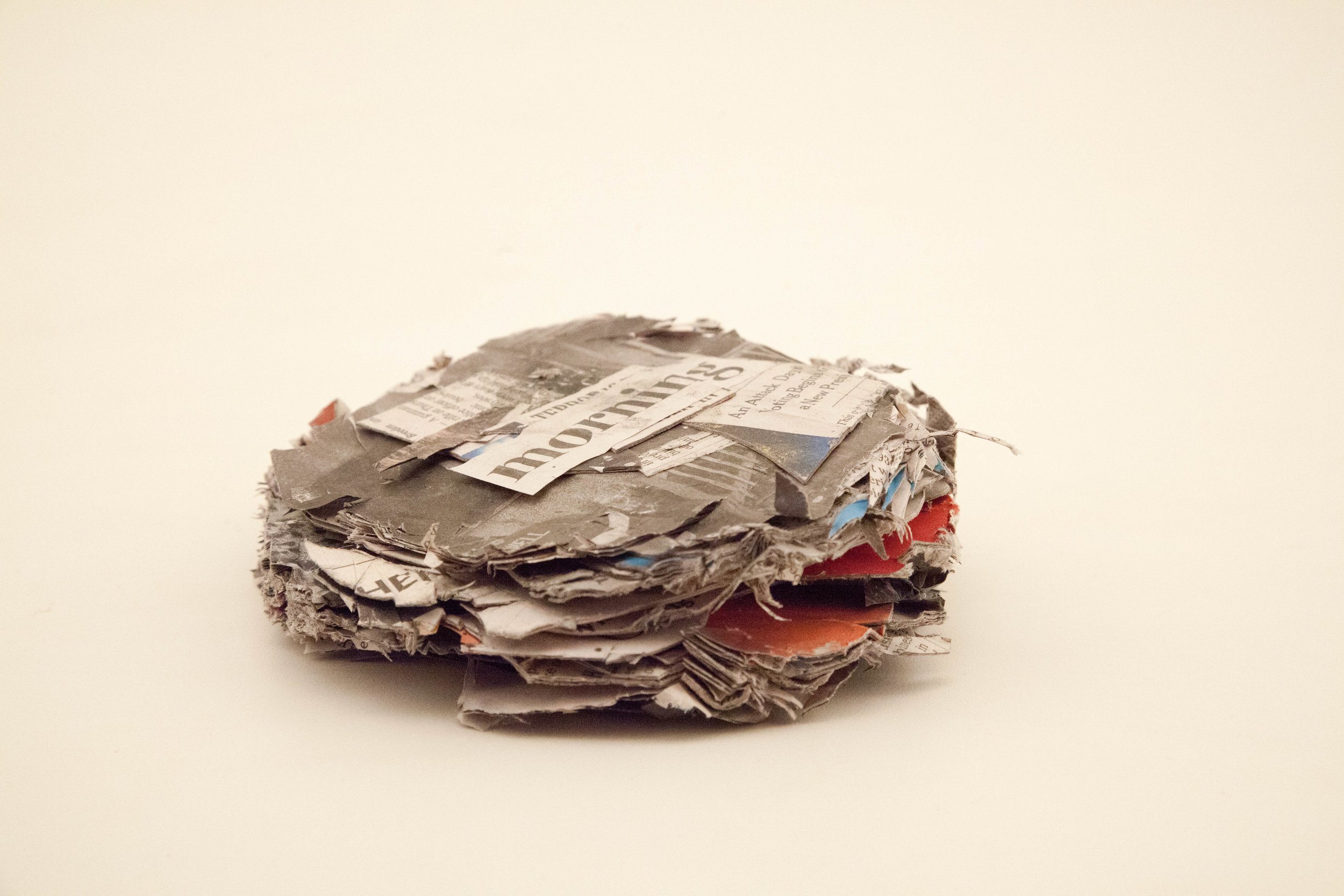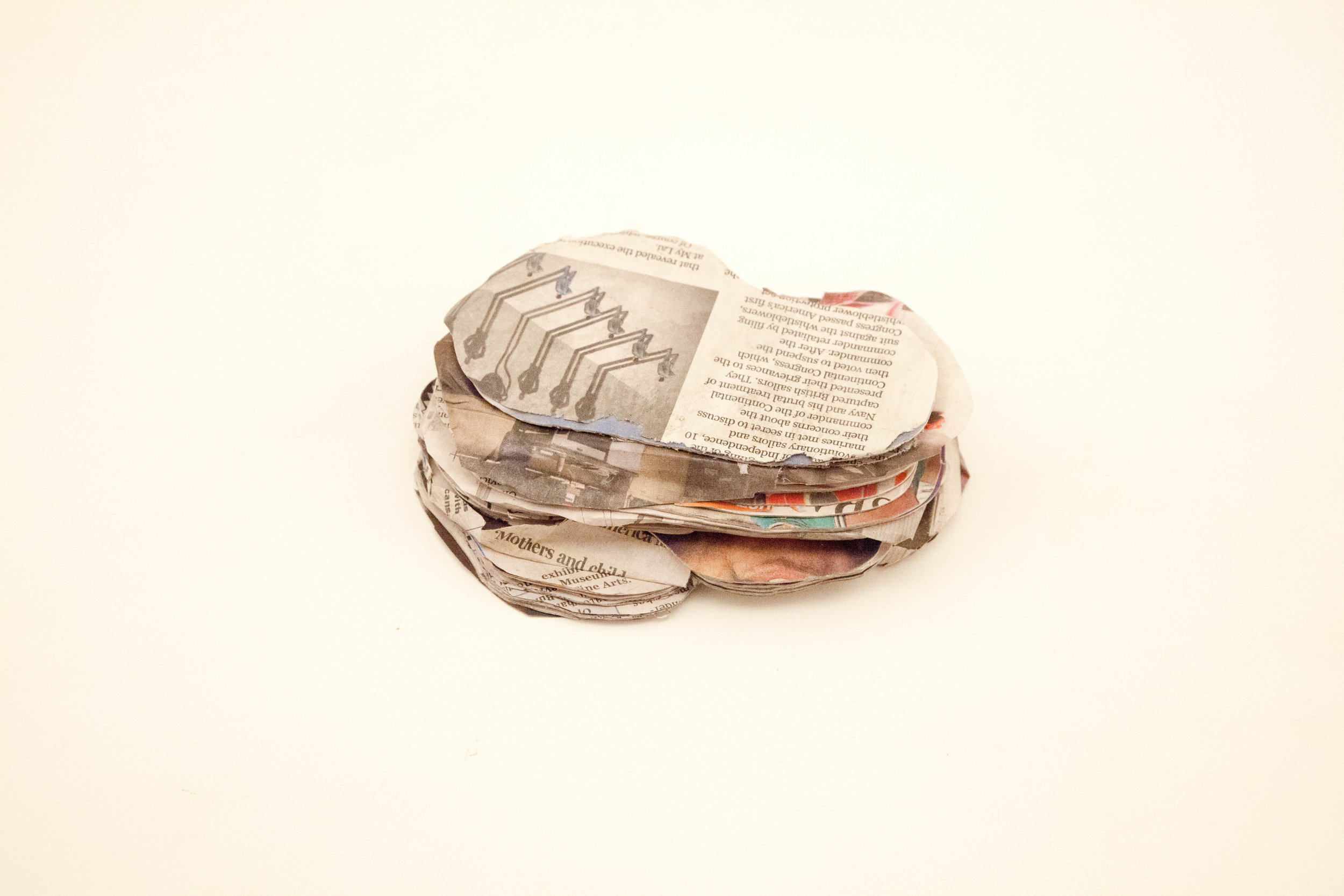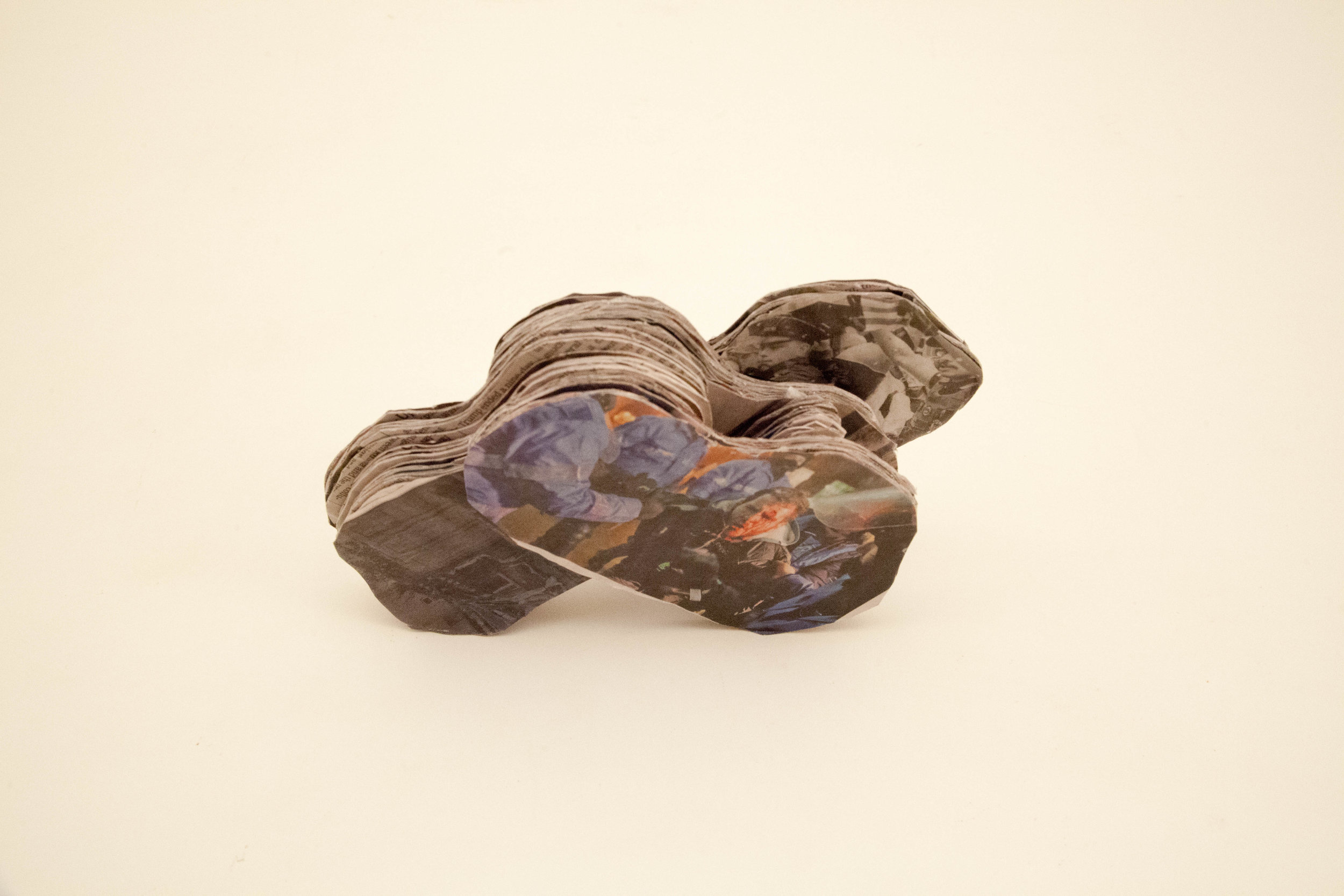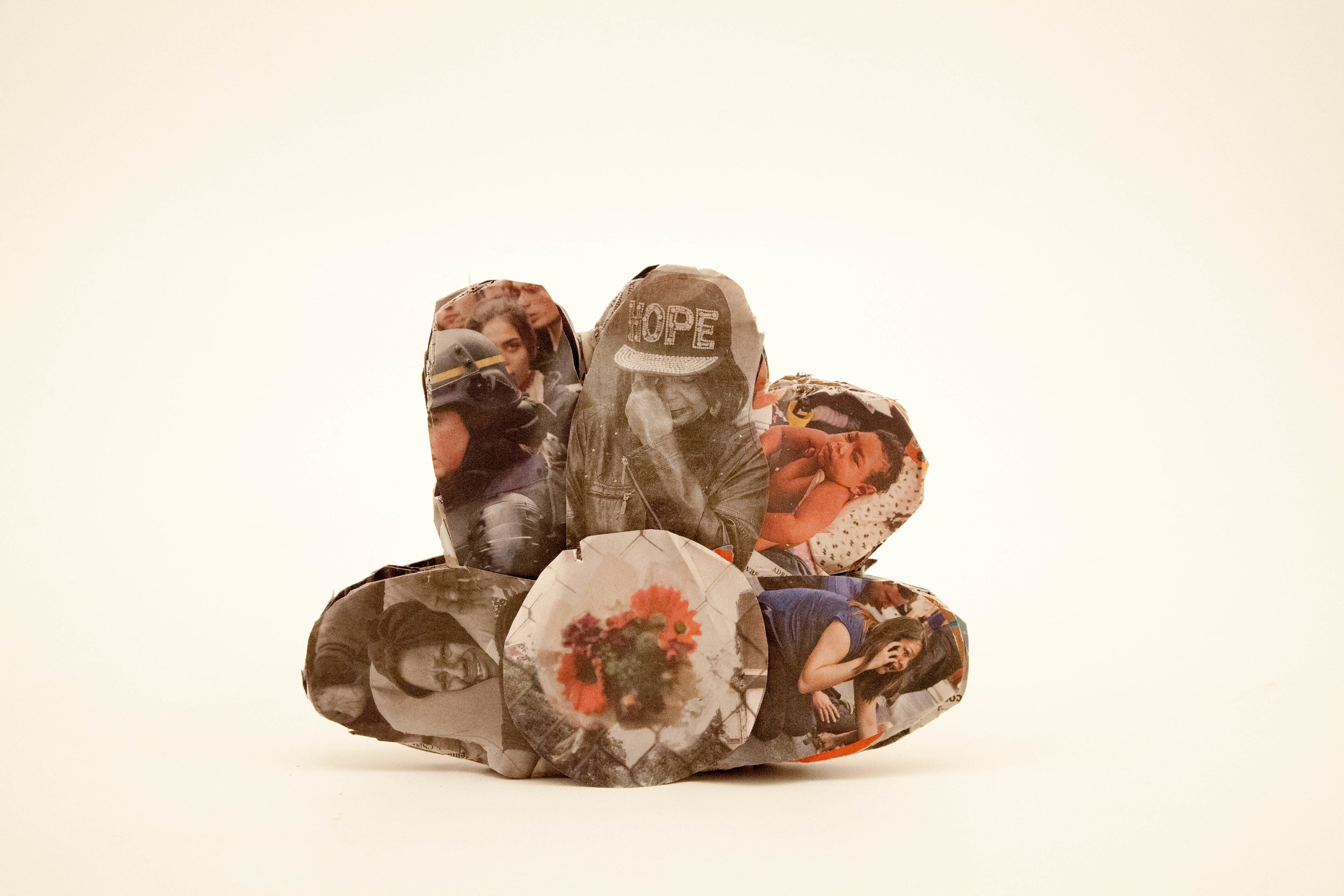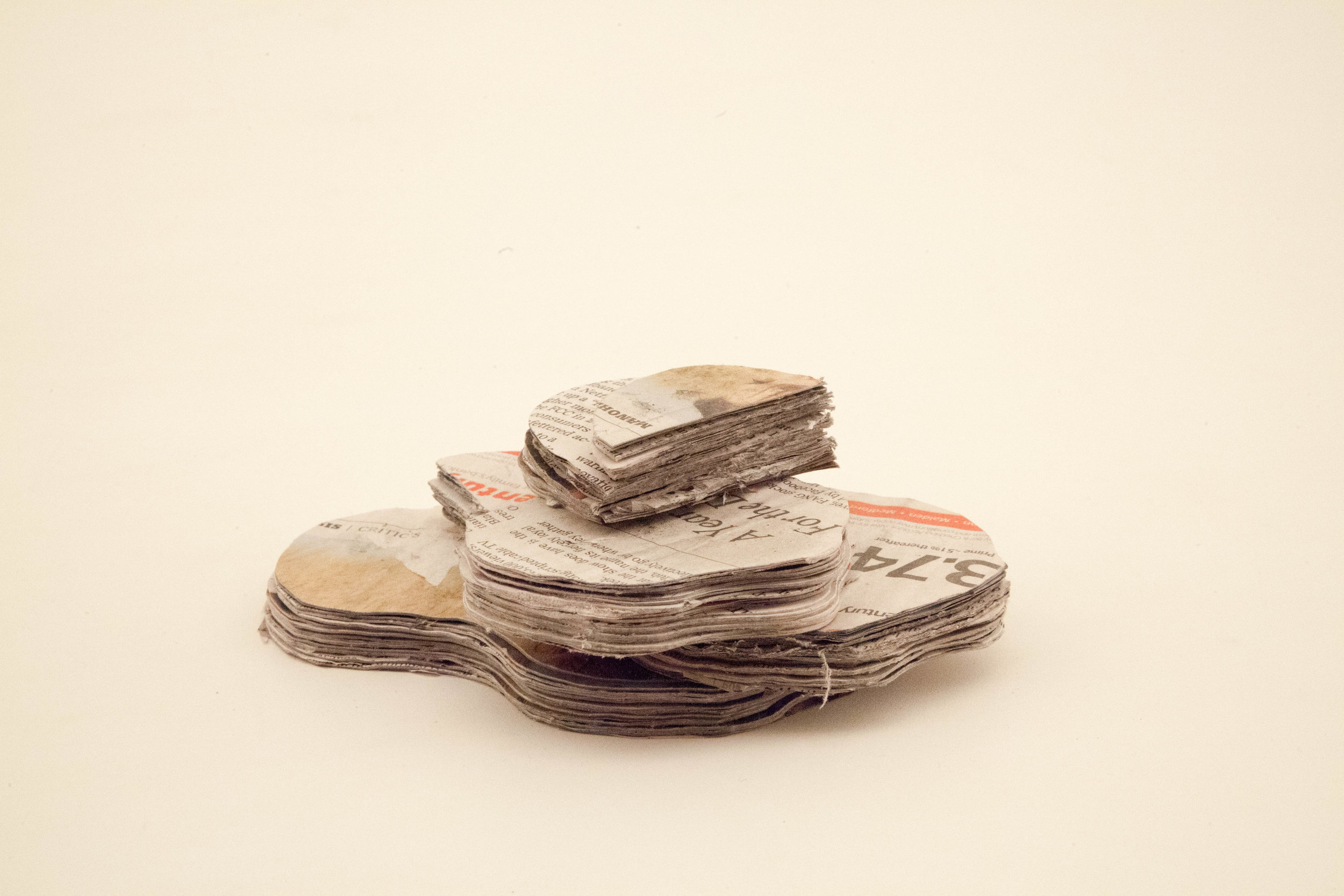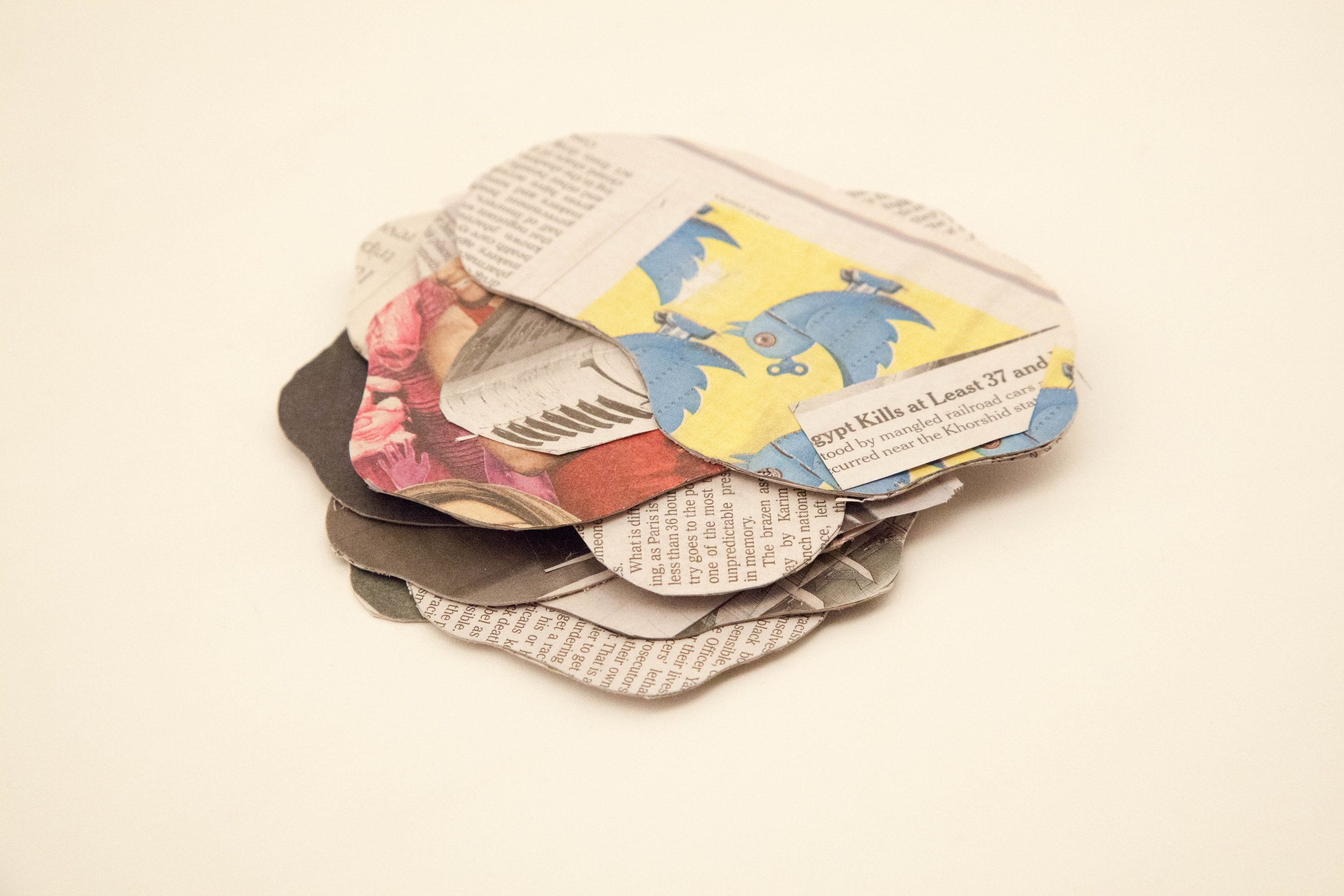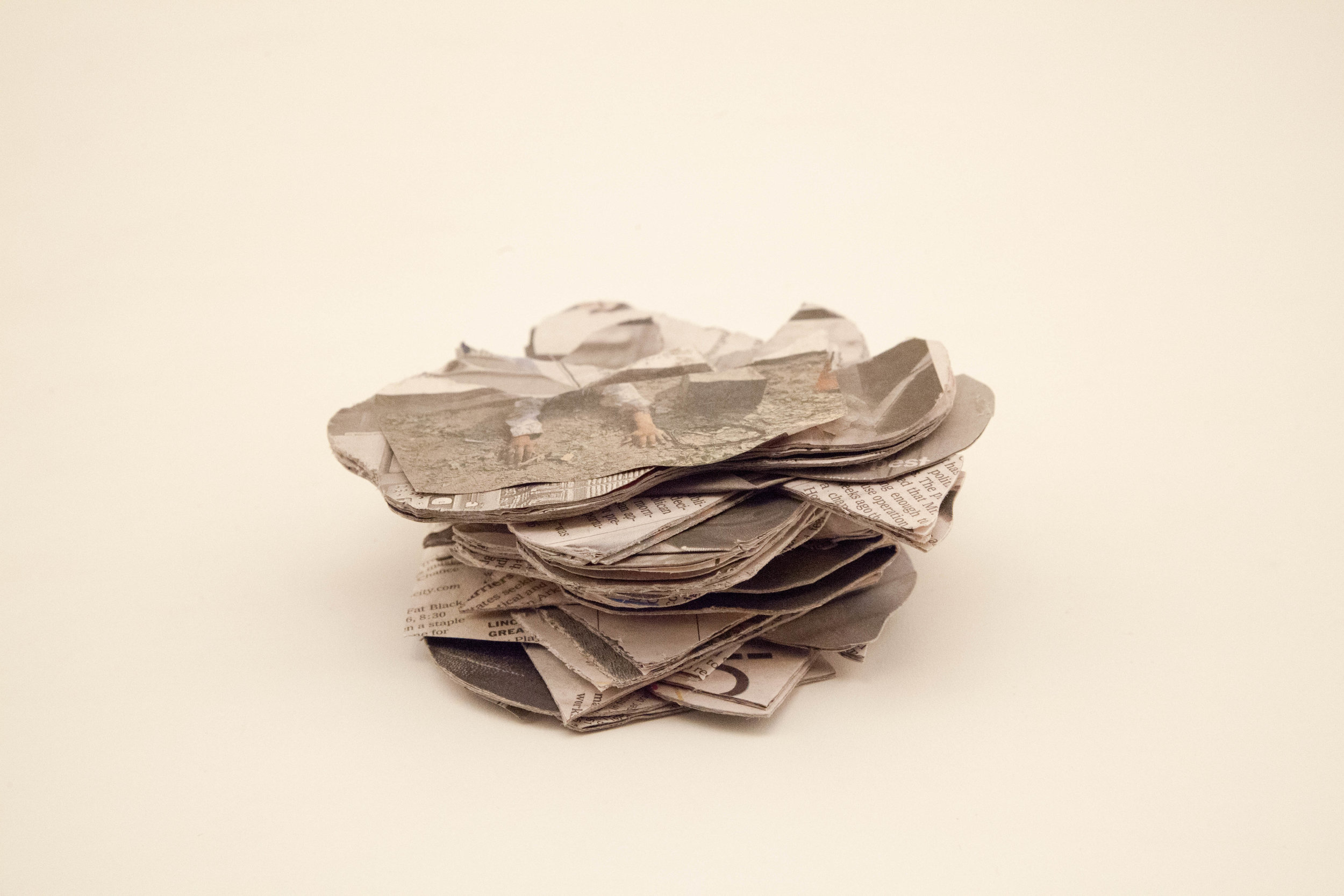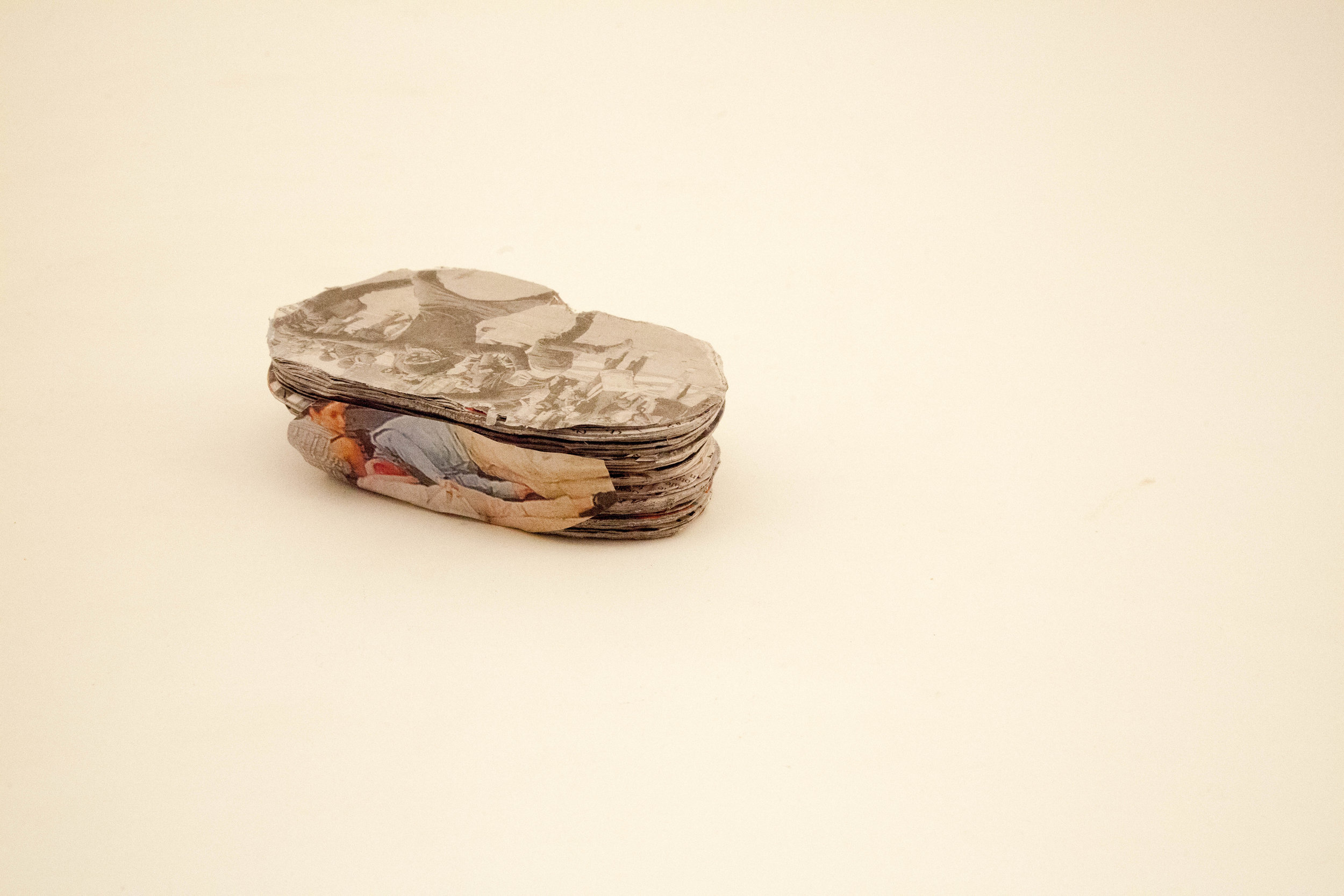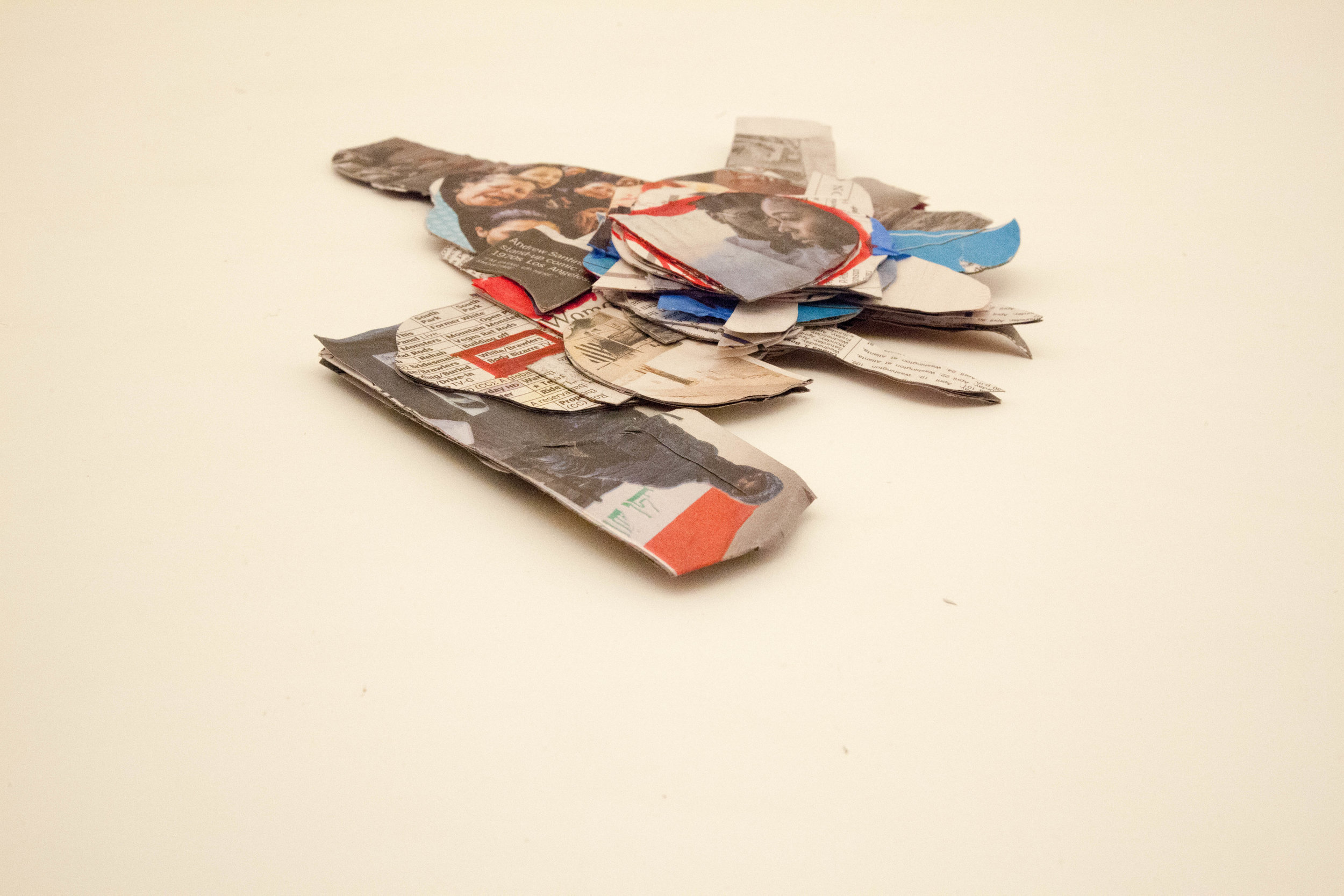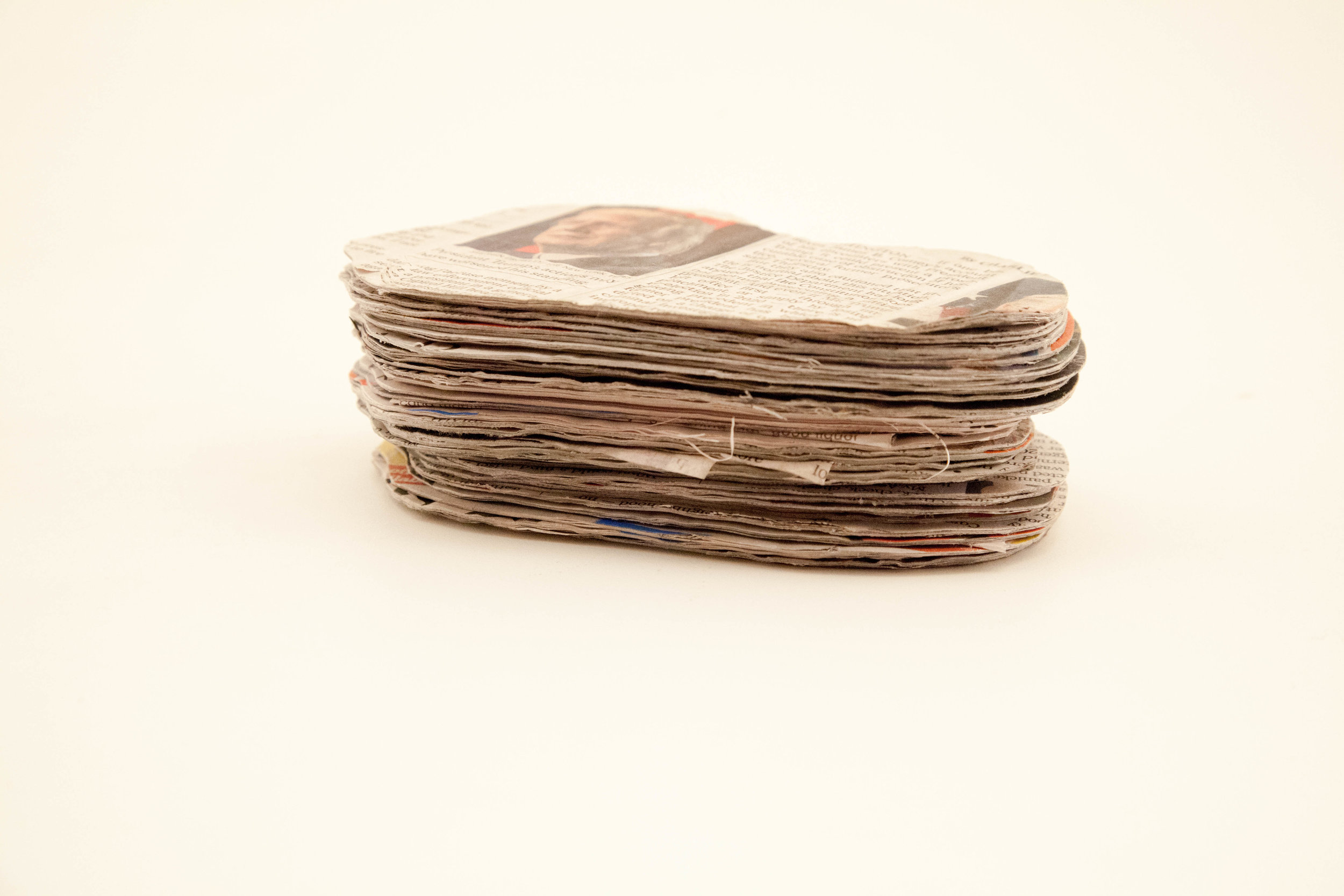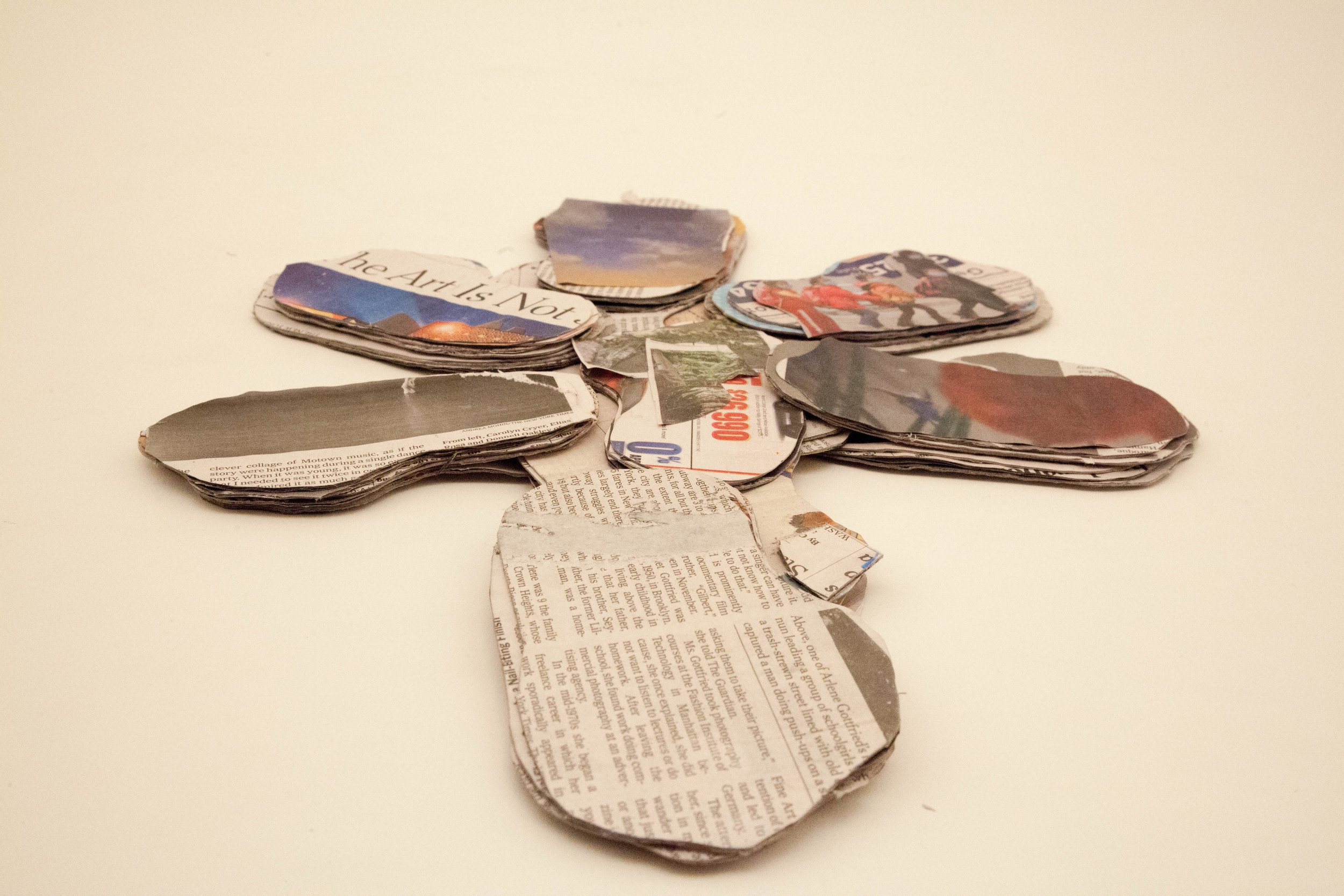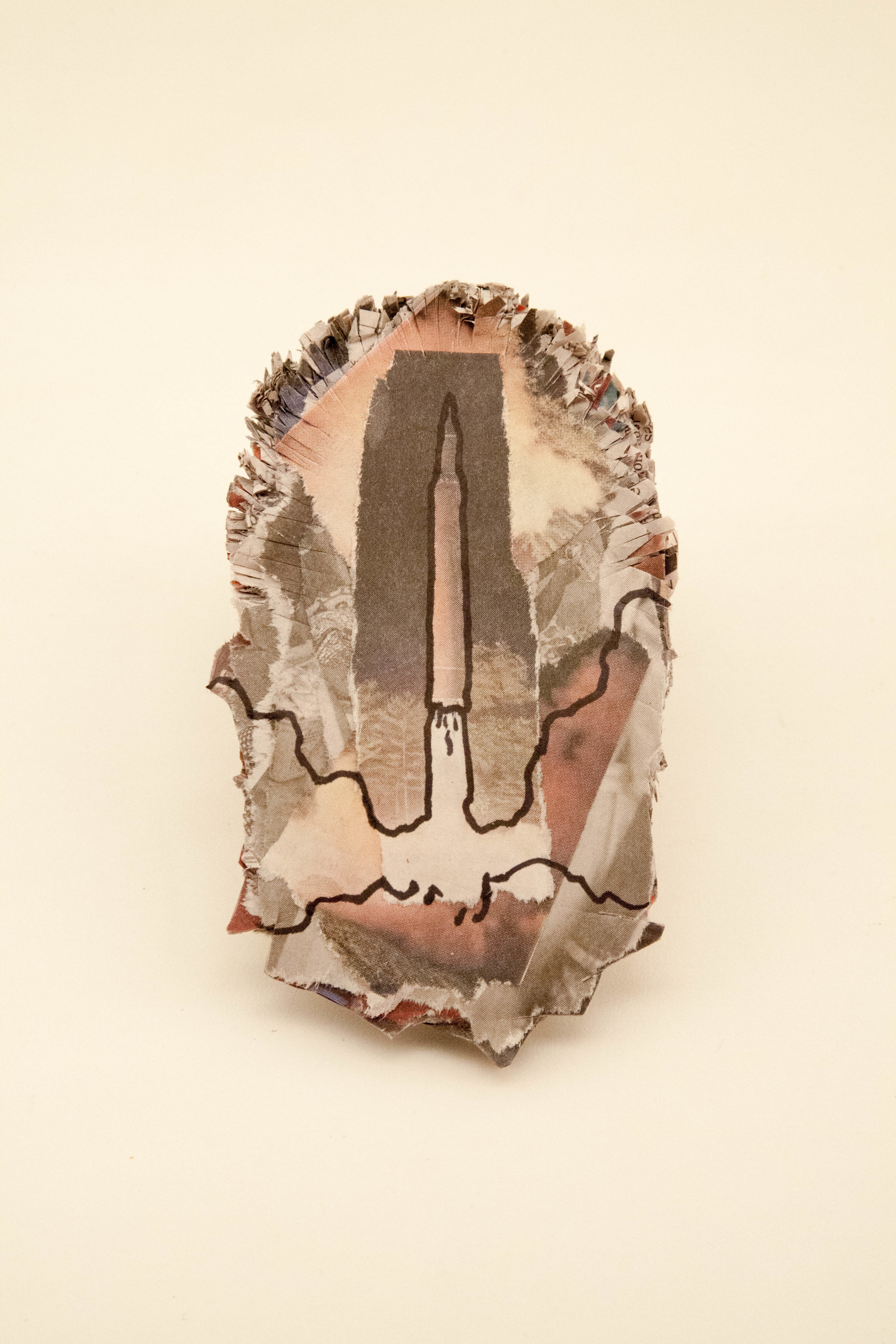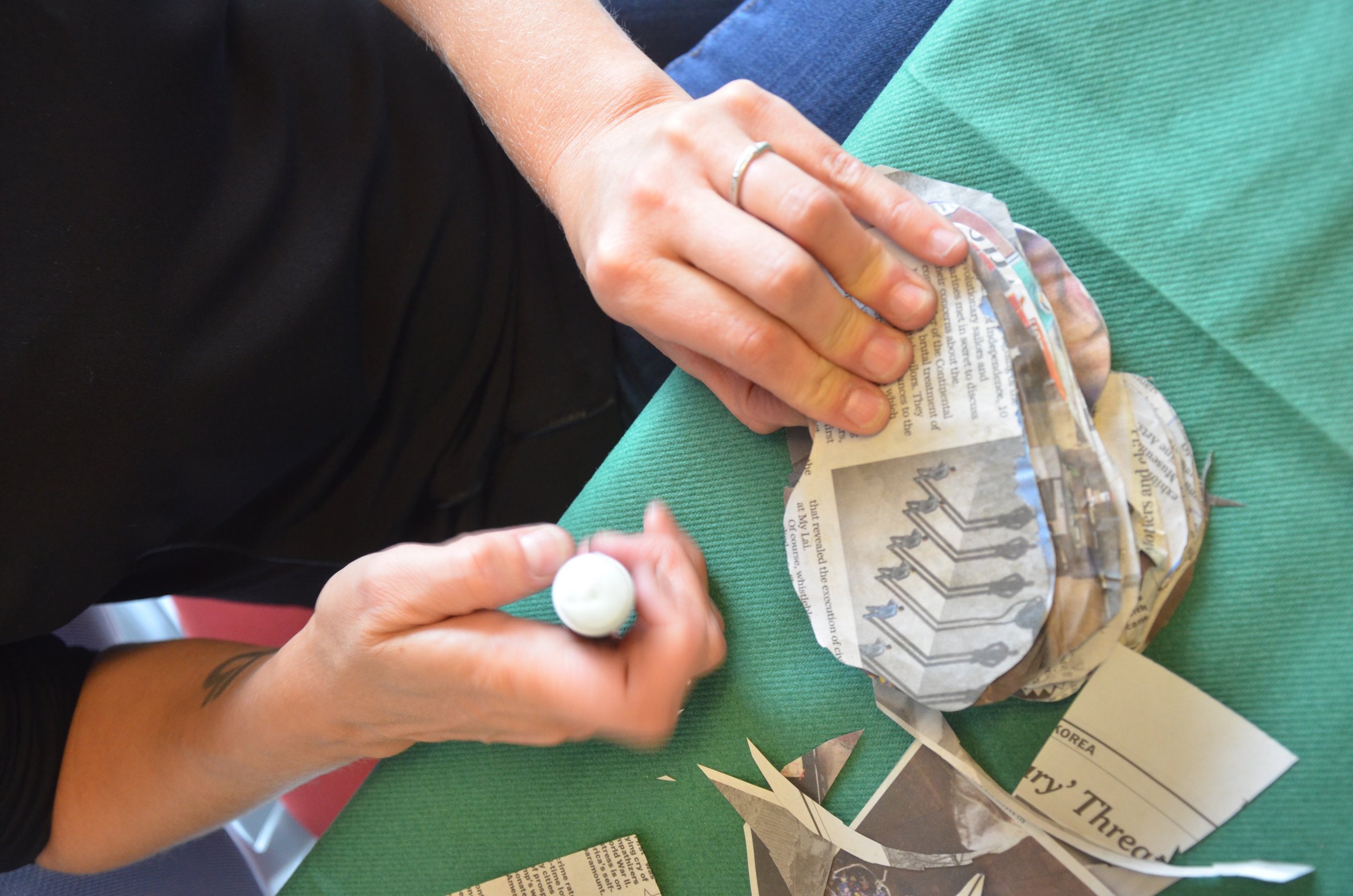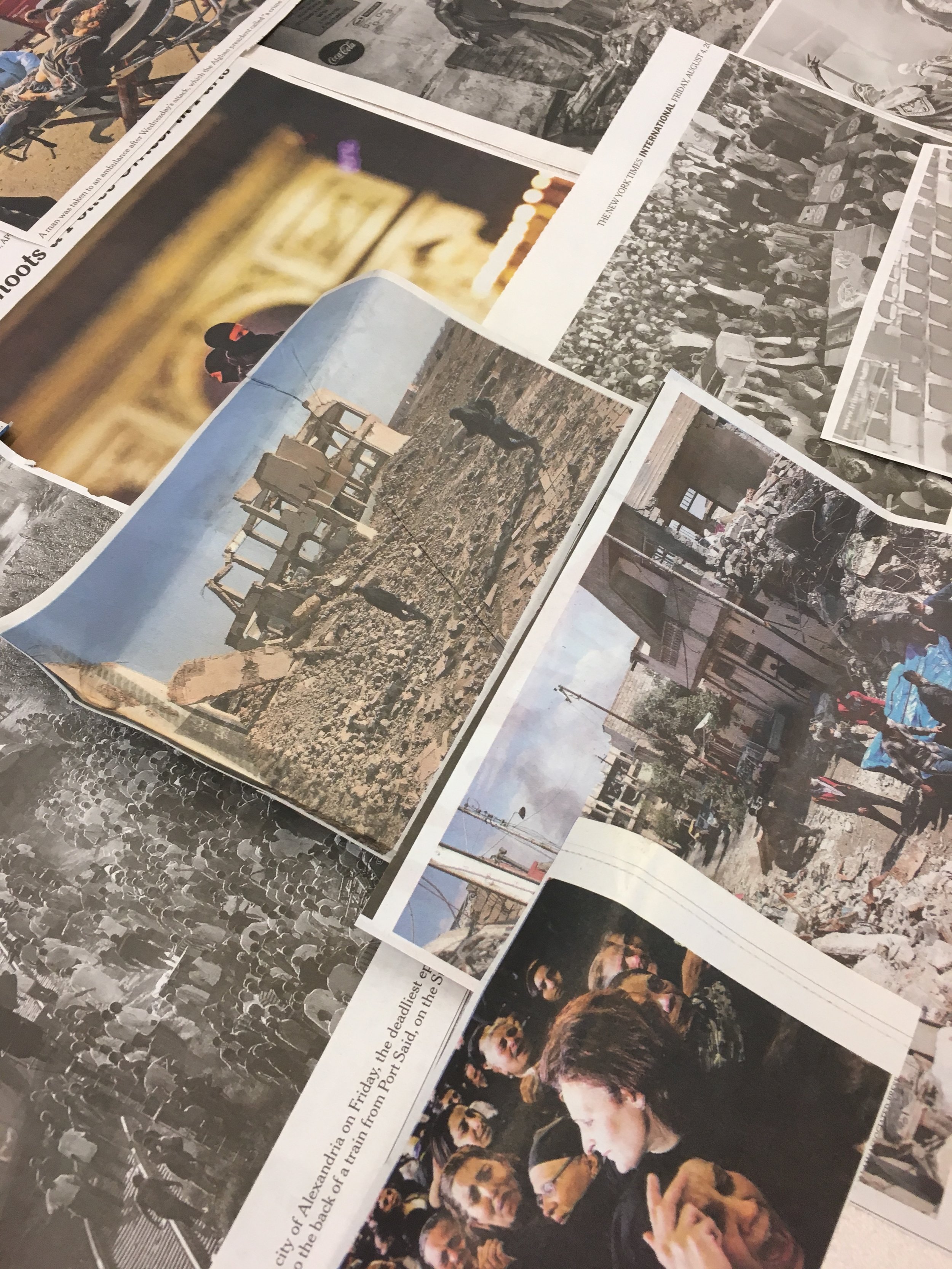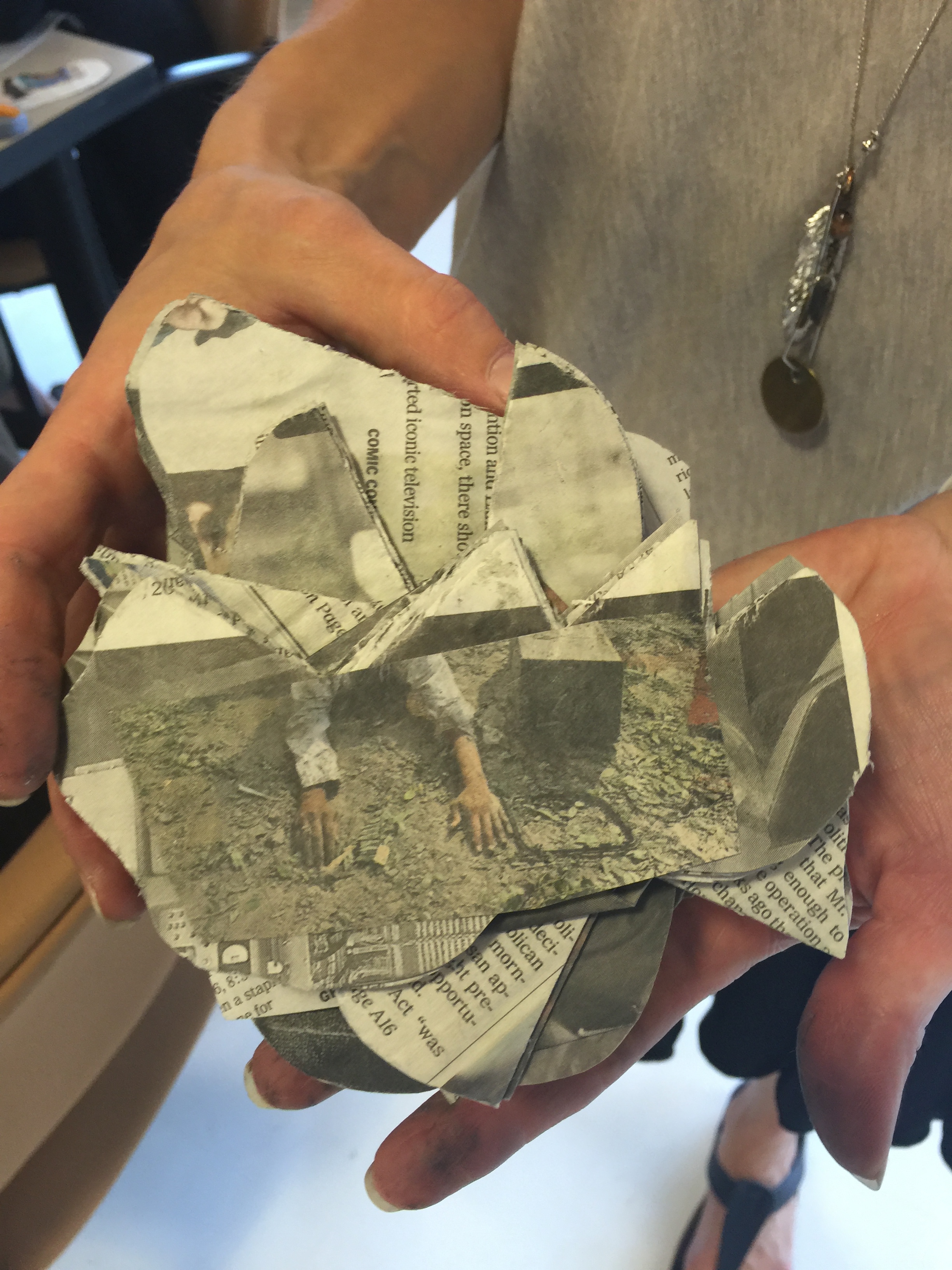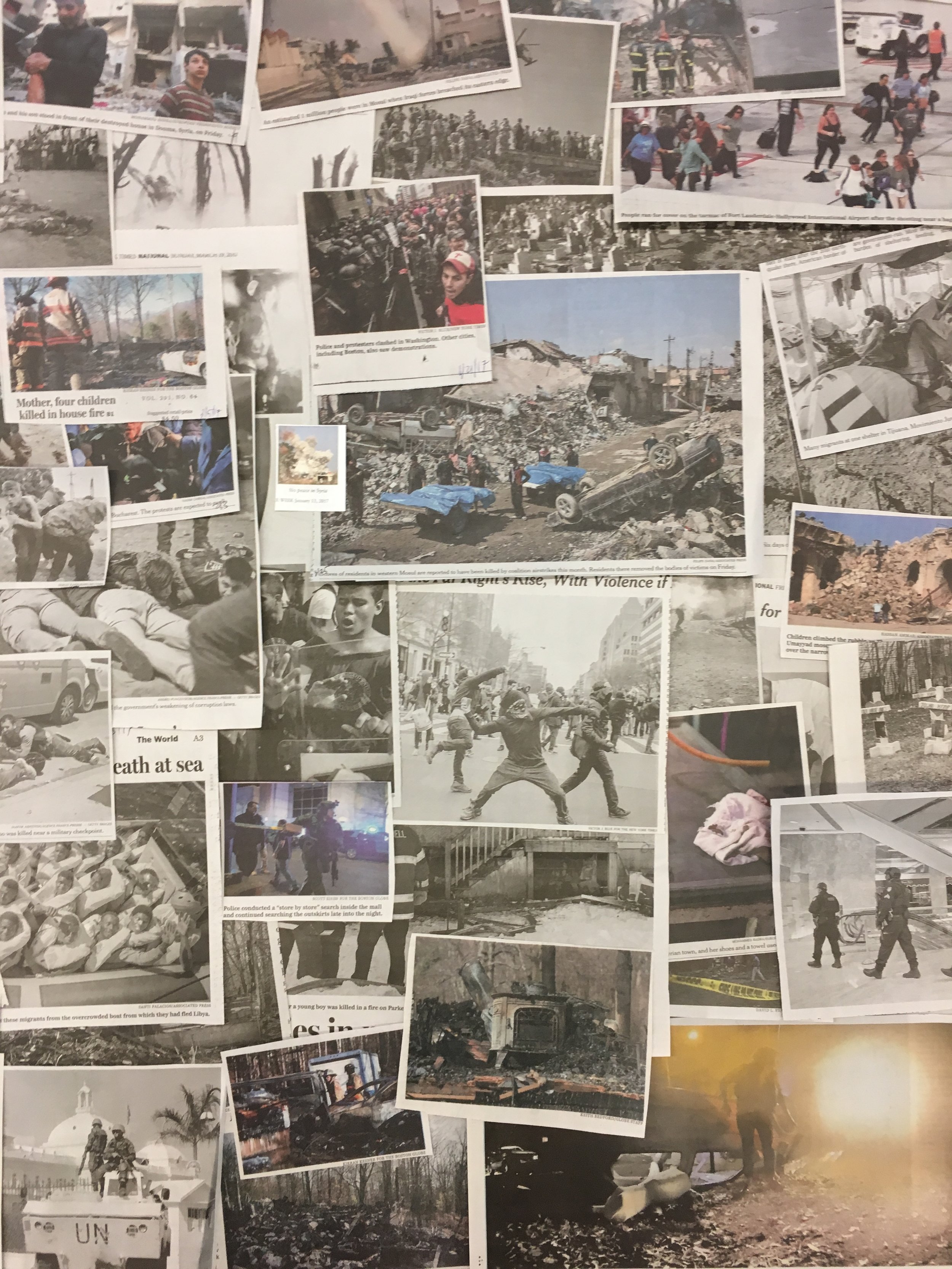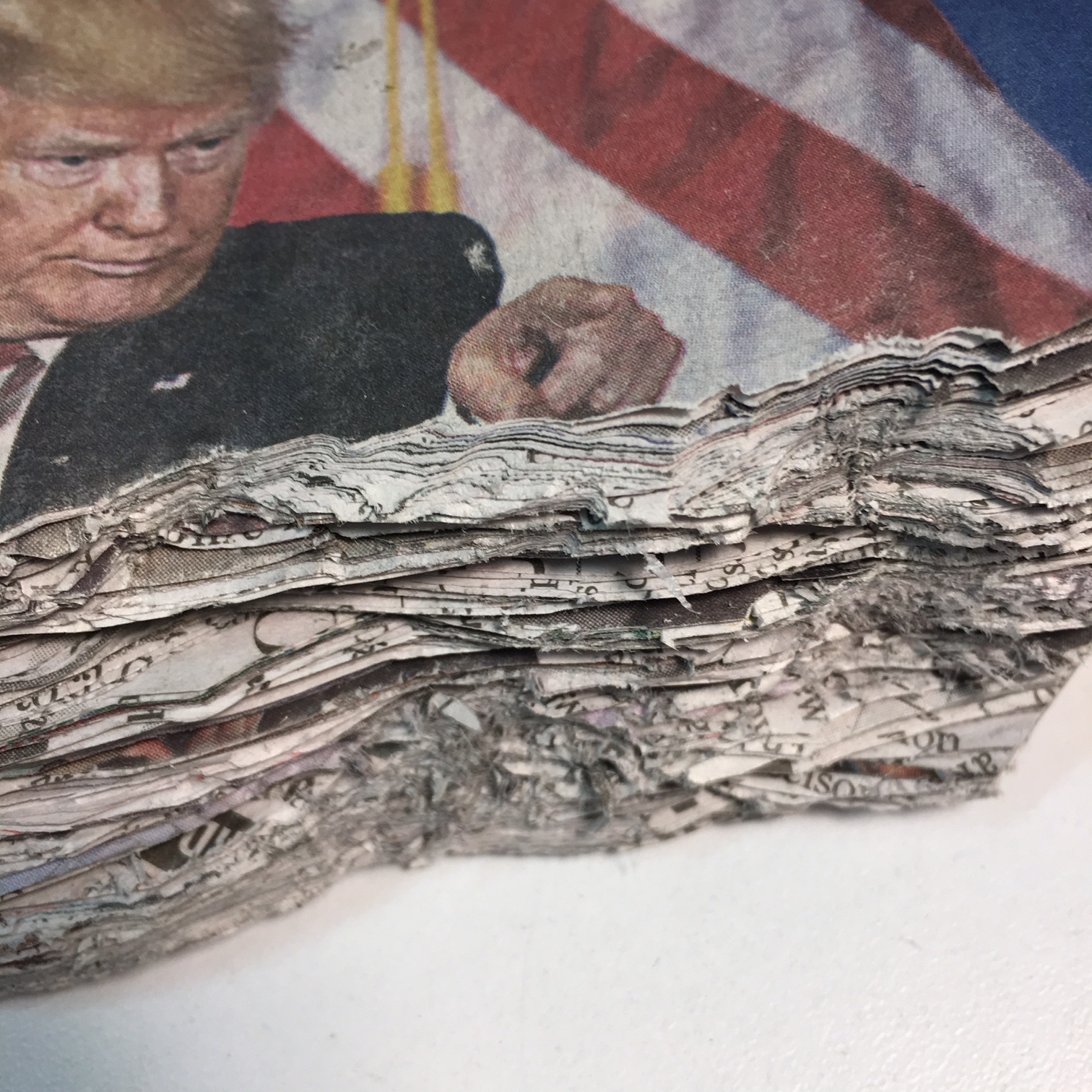For the Gardner proposal, I used the opportunity to explore the proliferation of violent imagery in print and broadcast news through the co-creation of an object, a mandala with hundreds of violent images selected by participants. That workshop and another subsequent one at Babson College chapel have opened up a new direction in my practice. I can’t throw away newspapers!
Seriously. After the workshops, I continued reading the papers and instead of getting stuck on a horrific photo, pouring over its gory details and not being able to move on, I could see the violence and read about it. After this 14-month practice, I’ve become slightly less shocked, more desensitized. And just in time.
With the violence manifesting in our country via vicious hate speak, the entire paper is full of viciousness. The printed word is taking on power I’ve never seen in my lifetime. Now, I’m taking in the entire paper and scrutinizing it and I feel compelled, like before, to make something with it.
I take it in with my eyes, brain, heart and with my hands. I cut it into hundreds of small shapes, glue them together and form something new, a sculptural object that fits in my hand. One daily paper can fit inside my hand. It seems digestible that way. It feels powerful. It's almost like a weapon.
